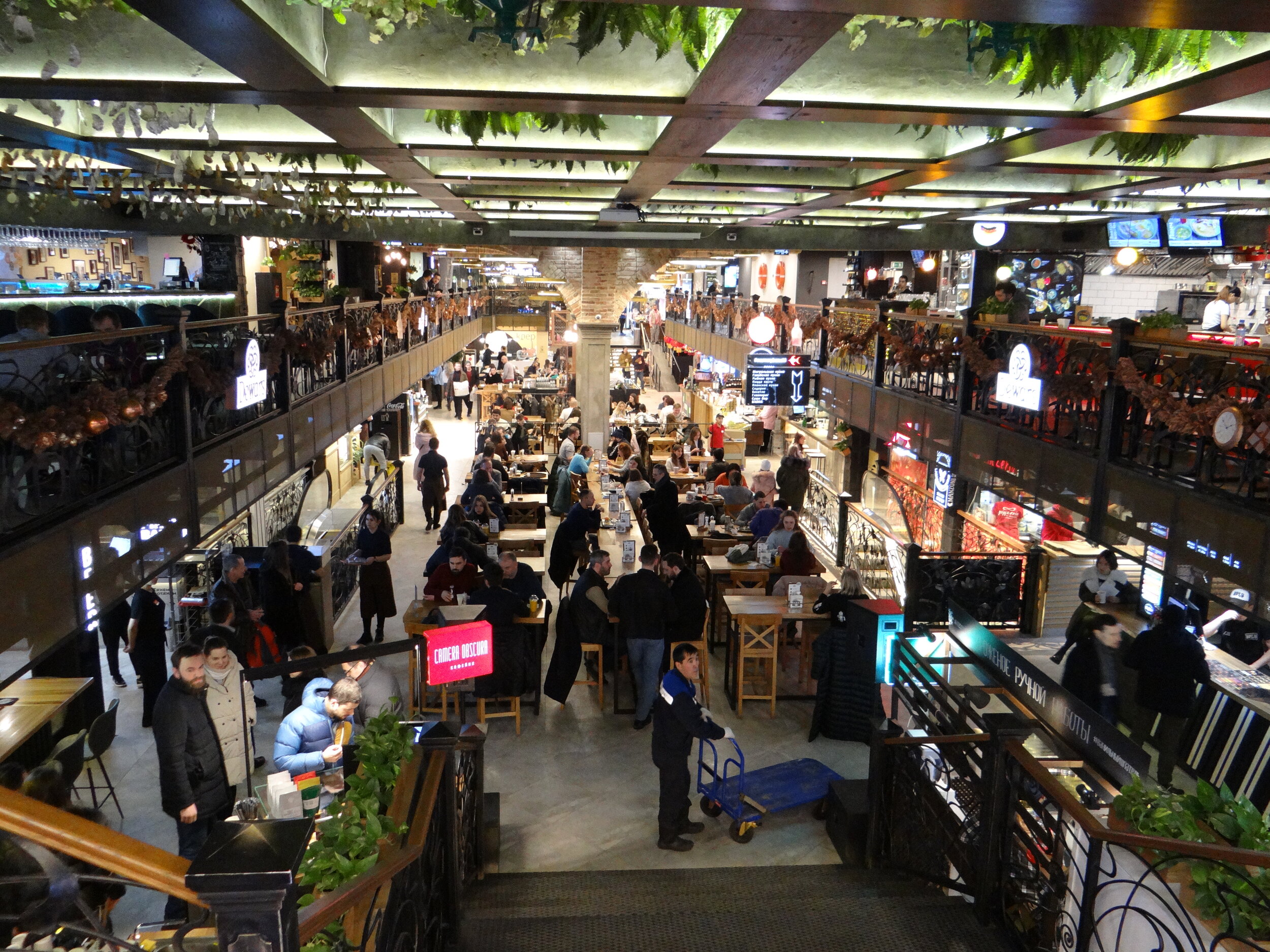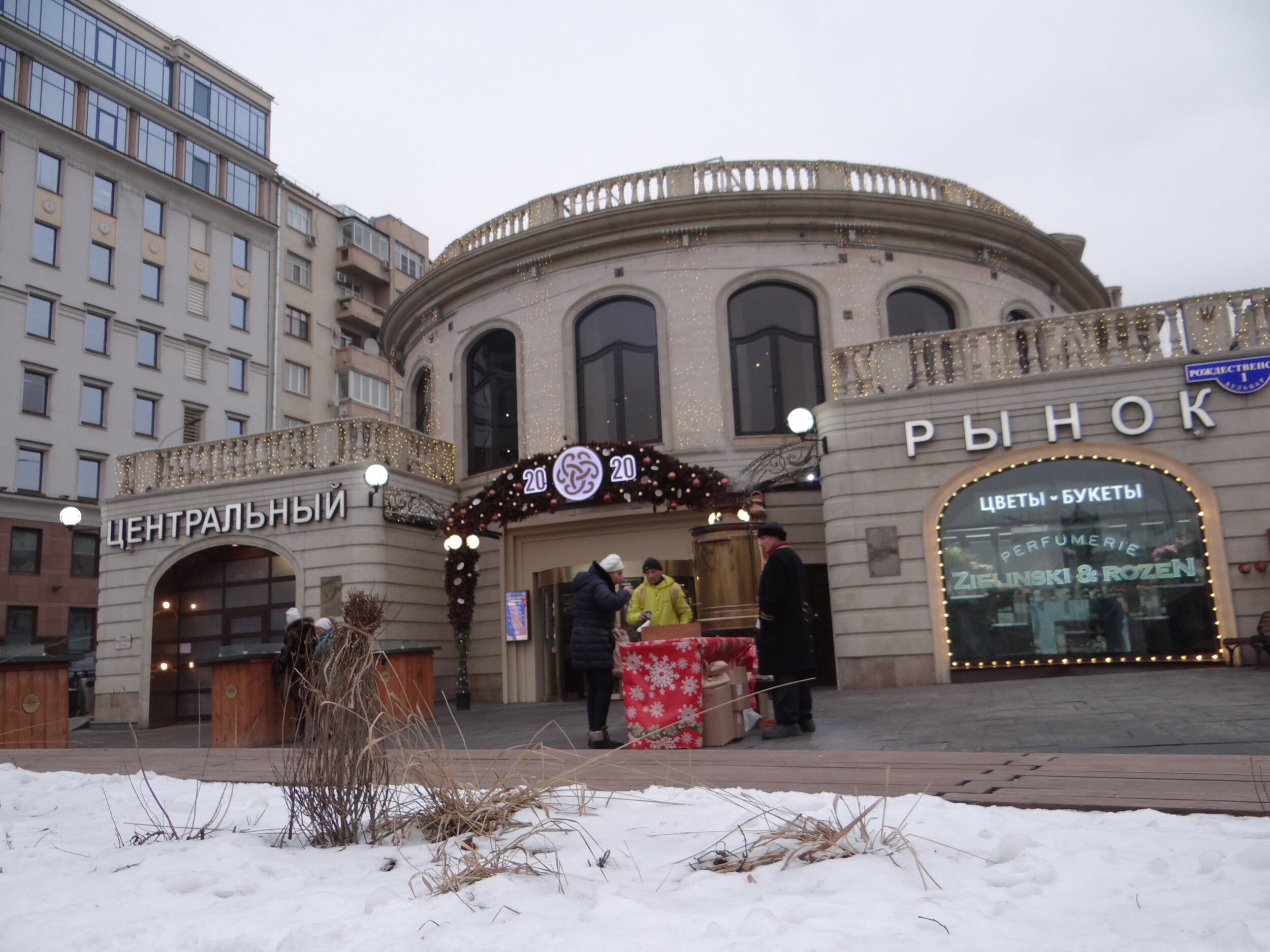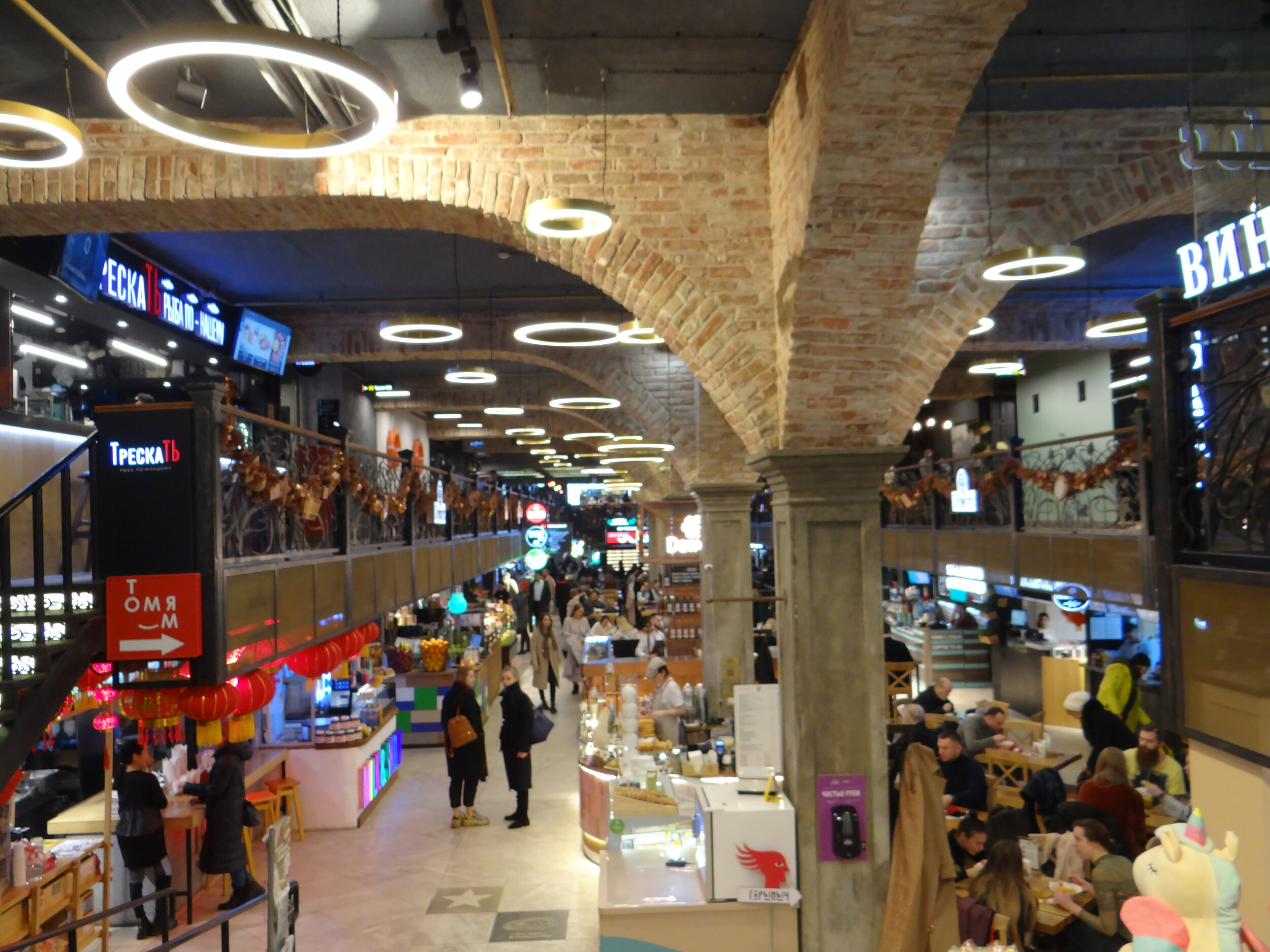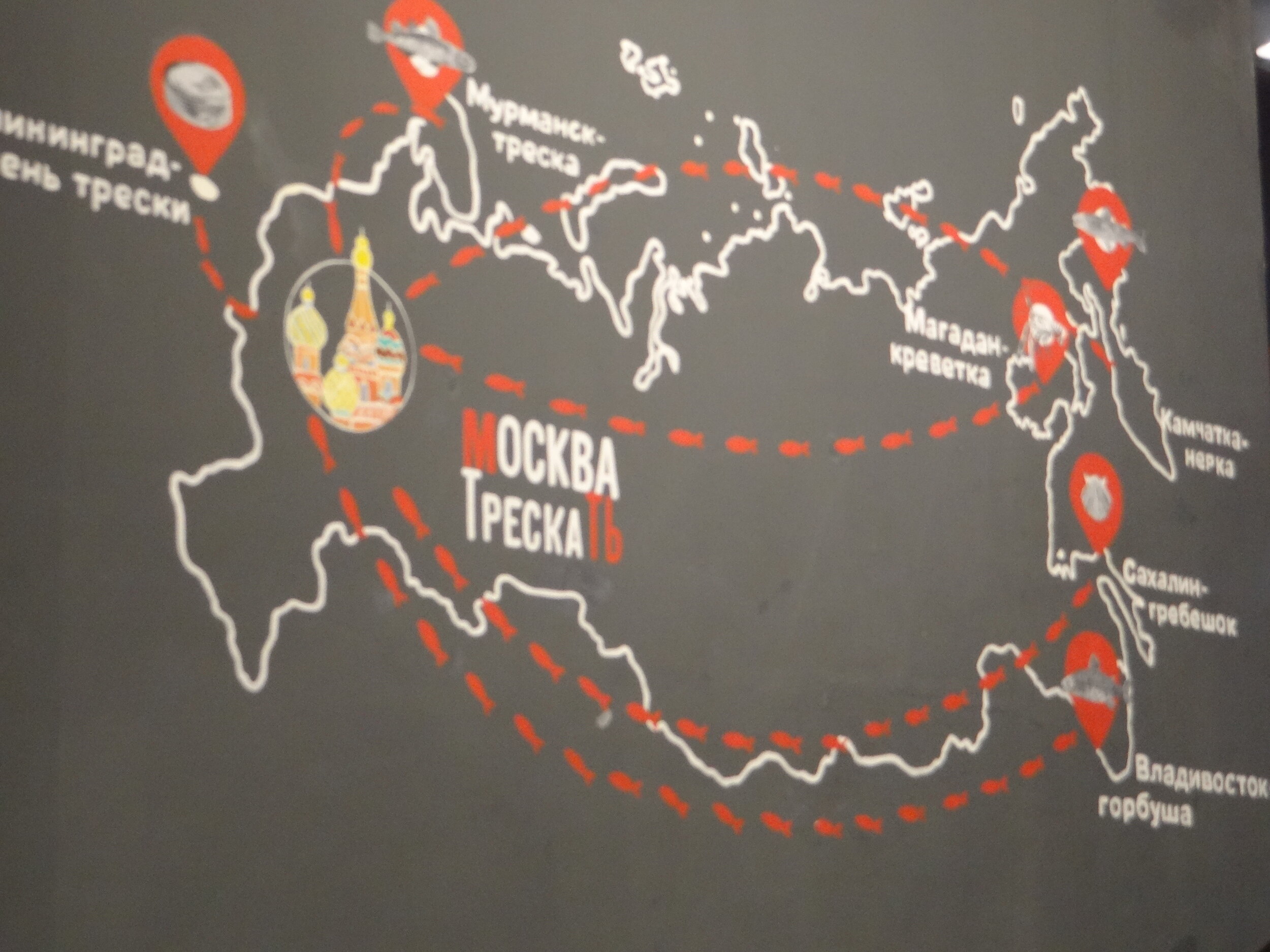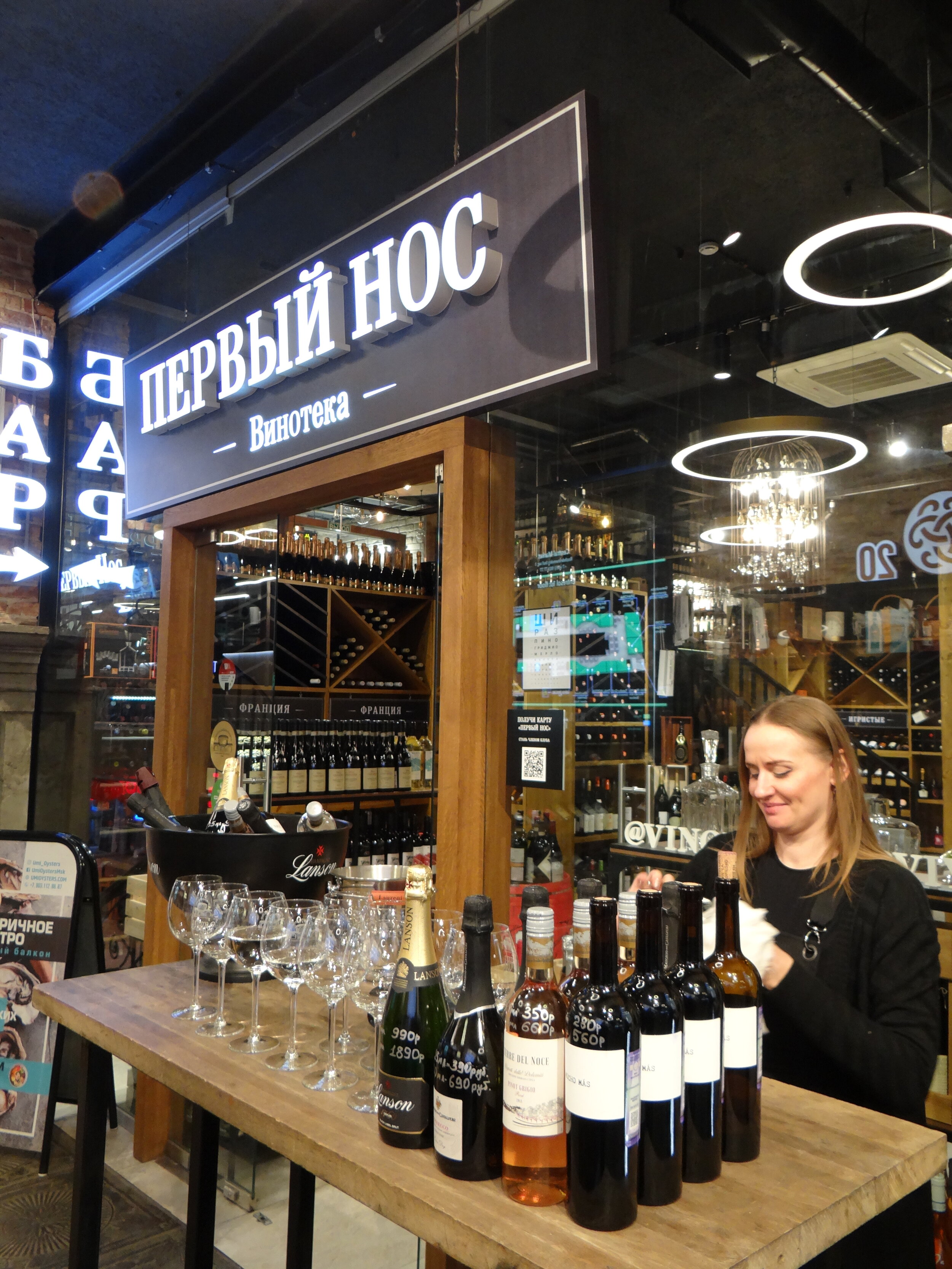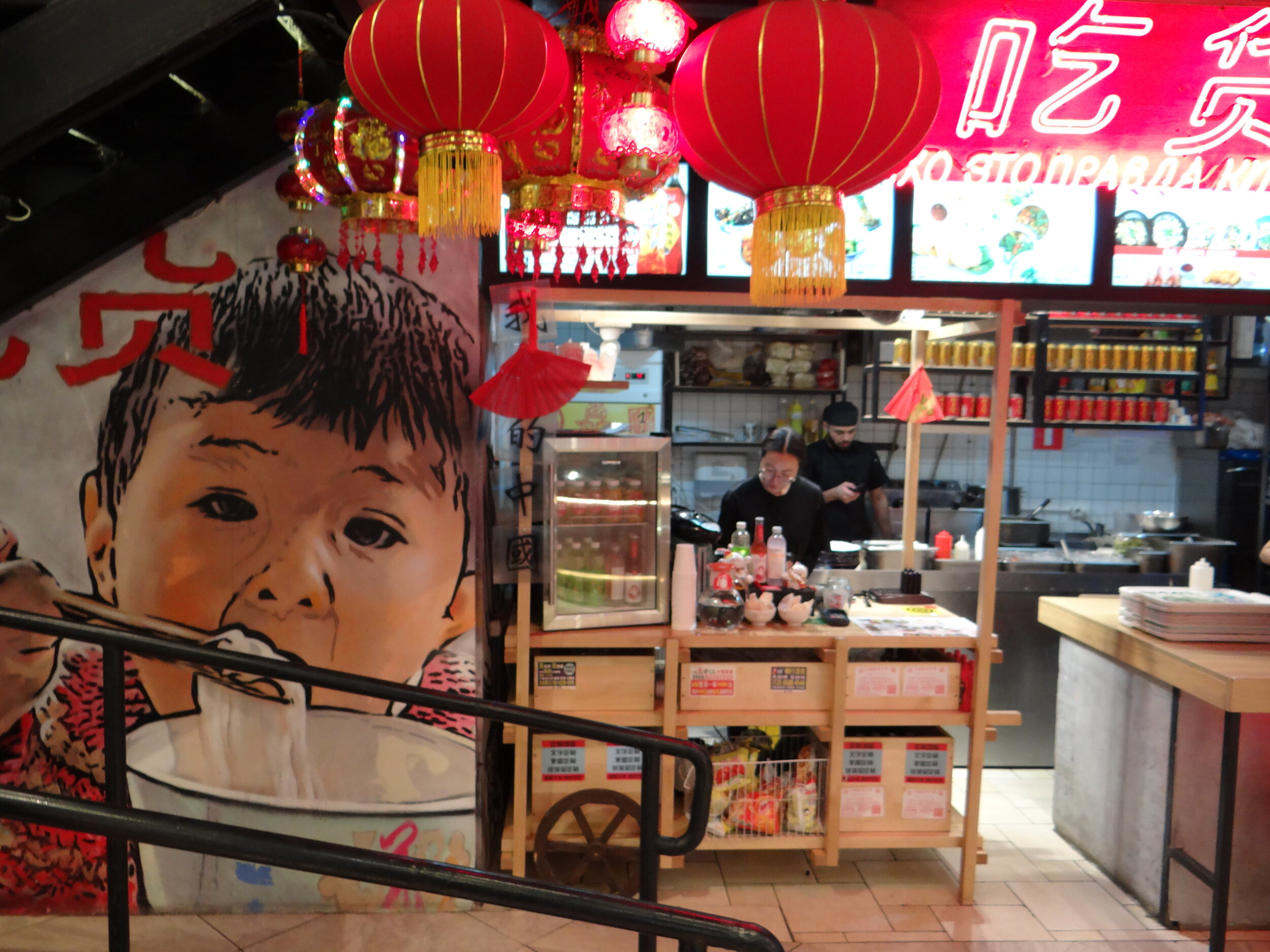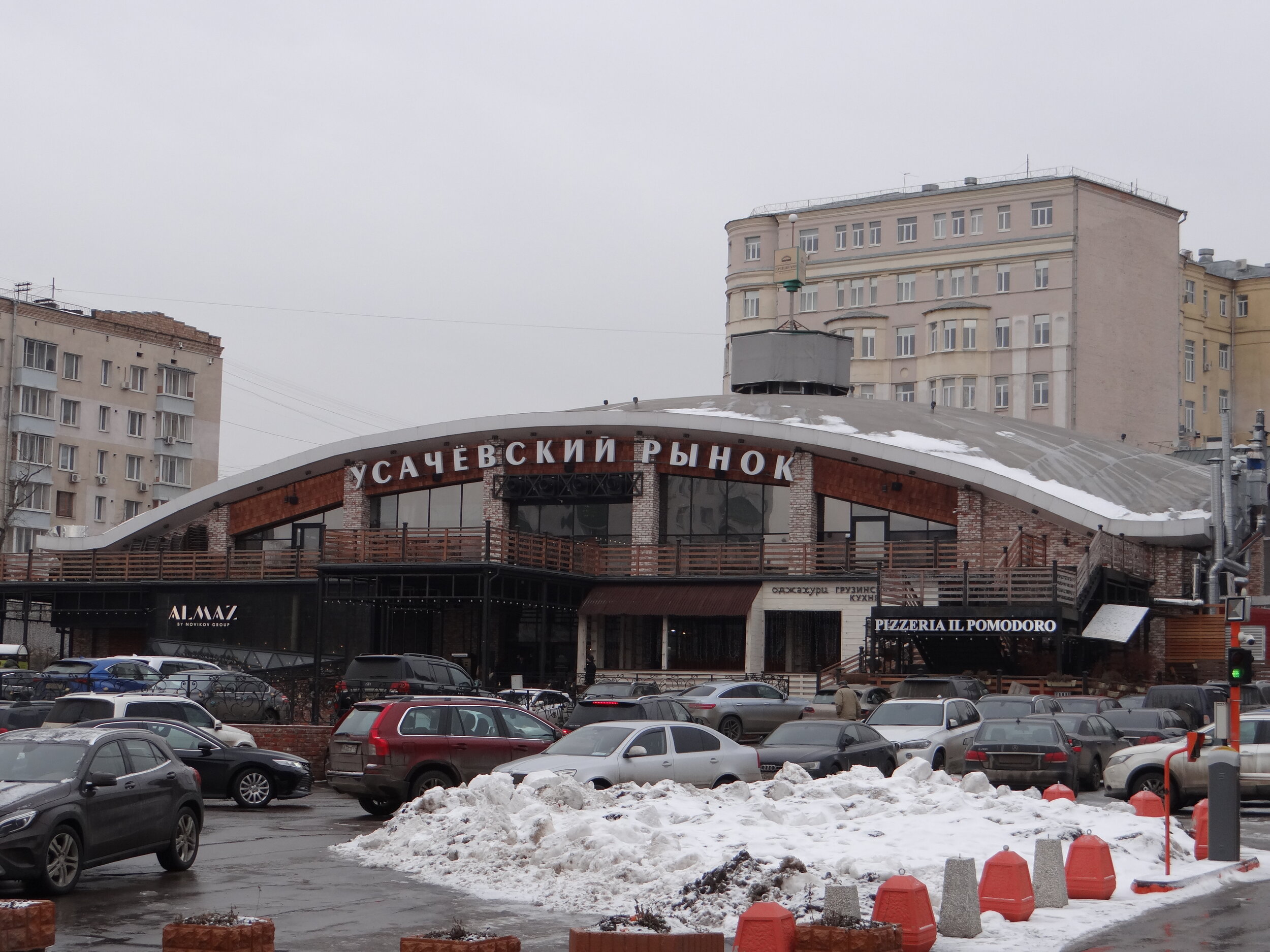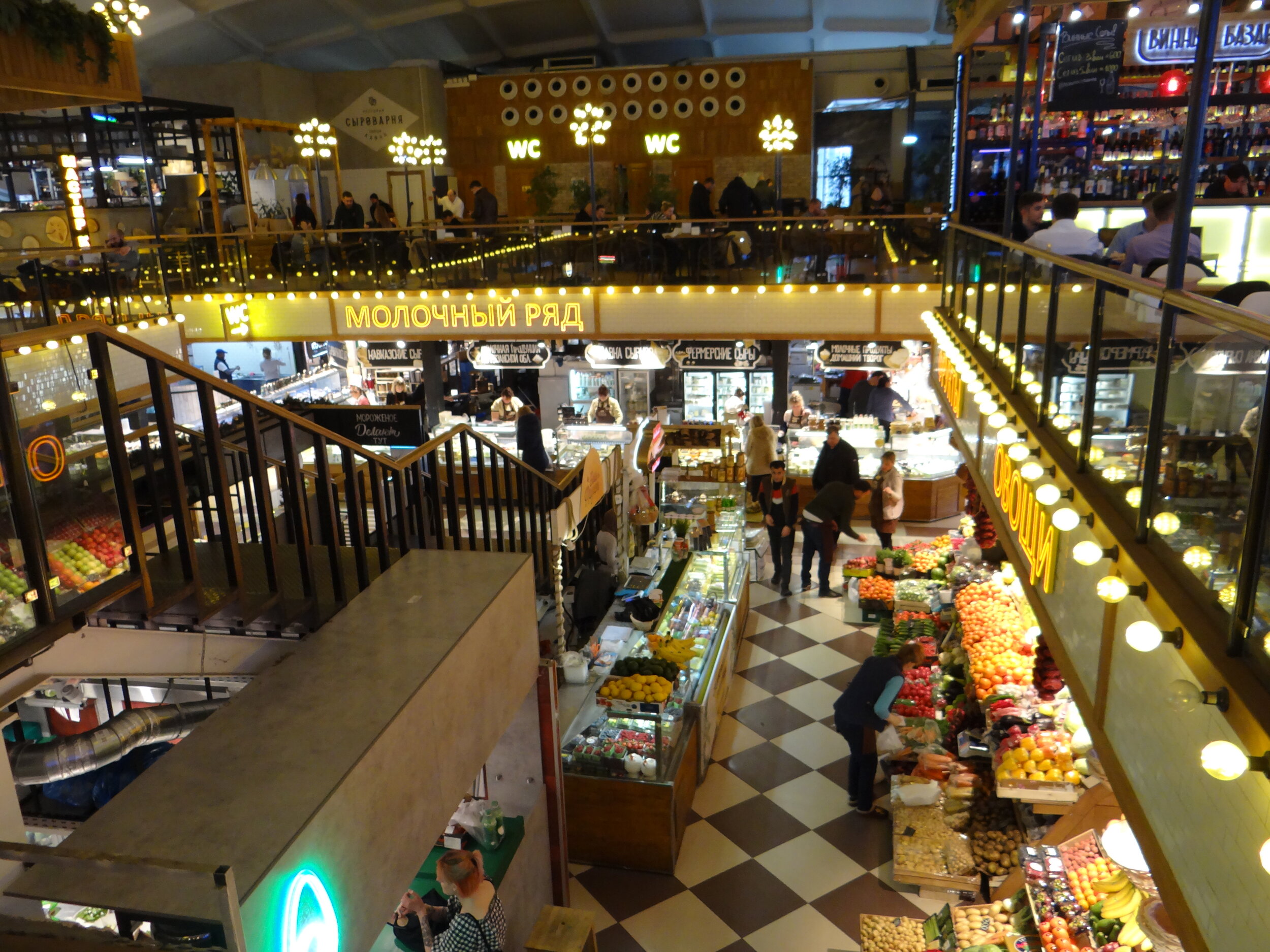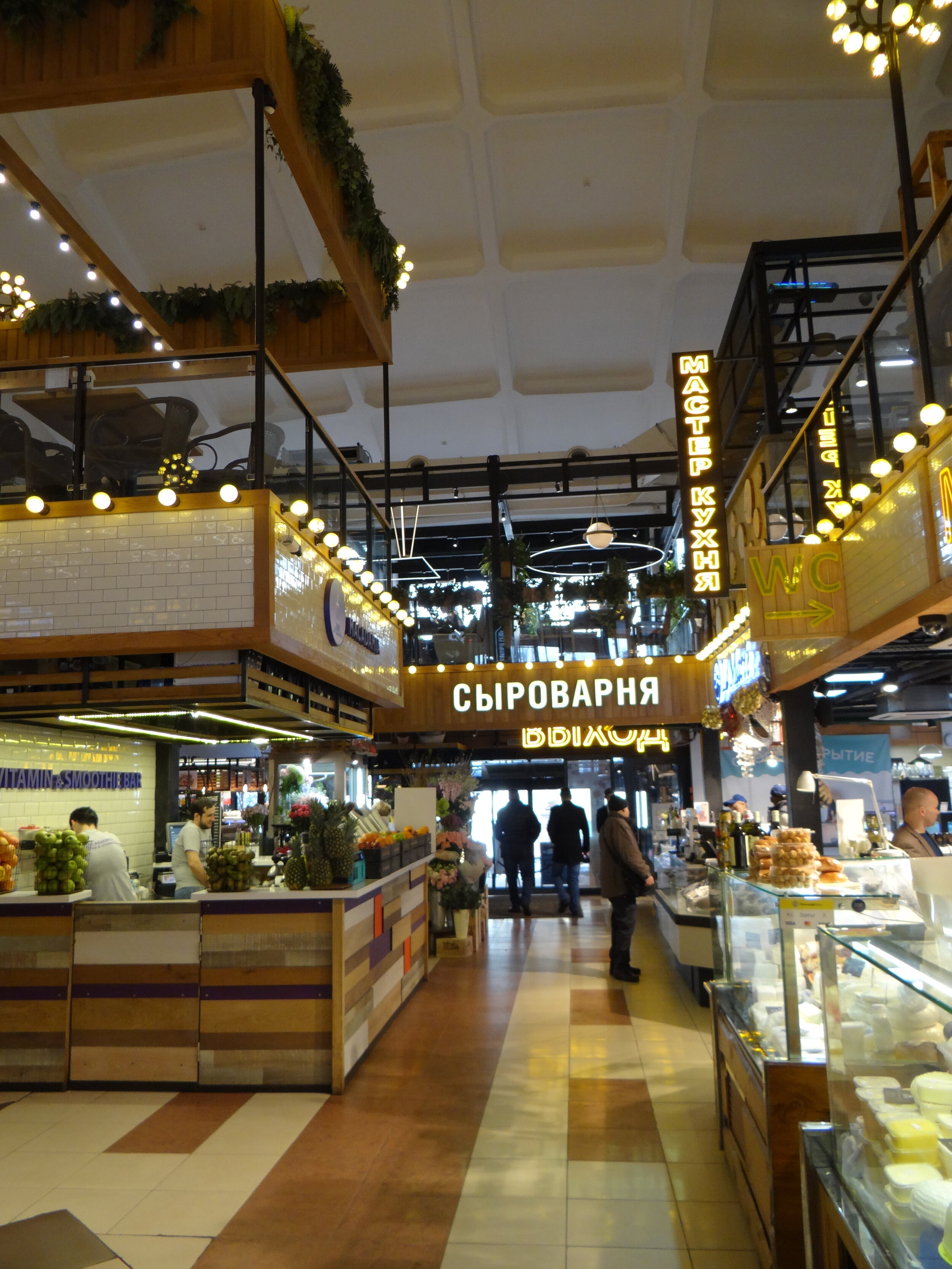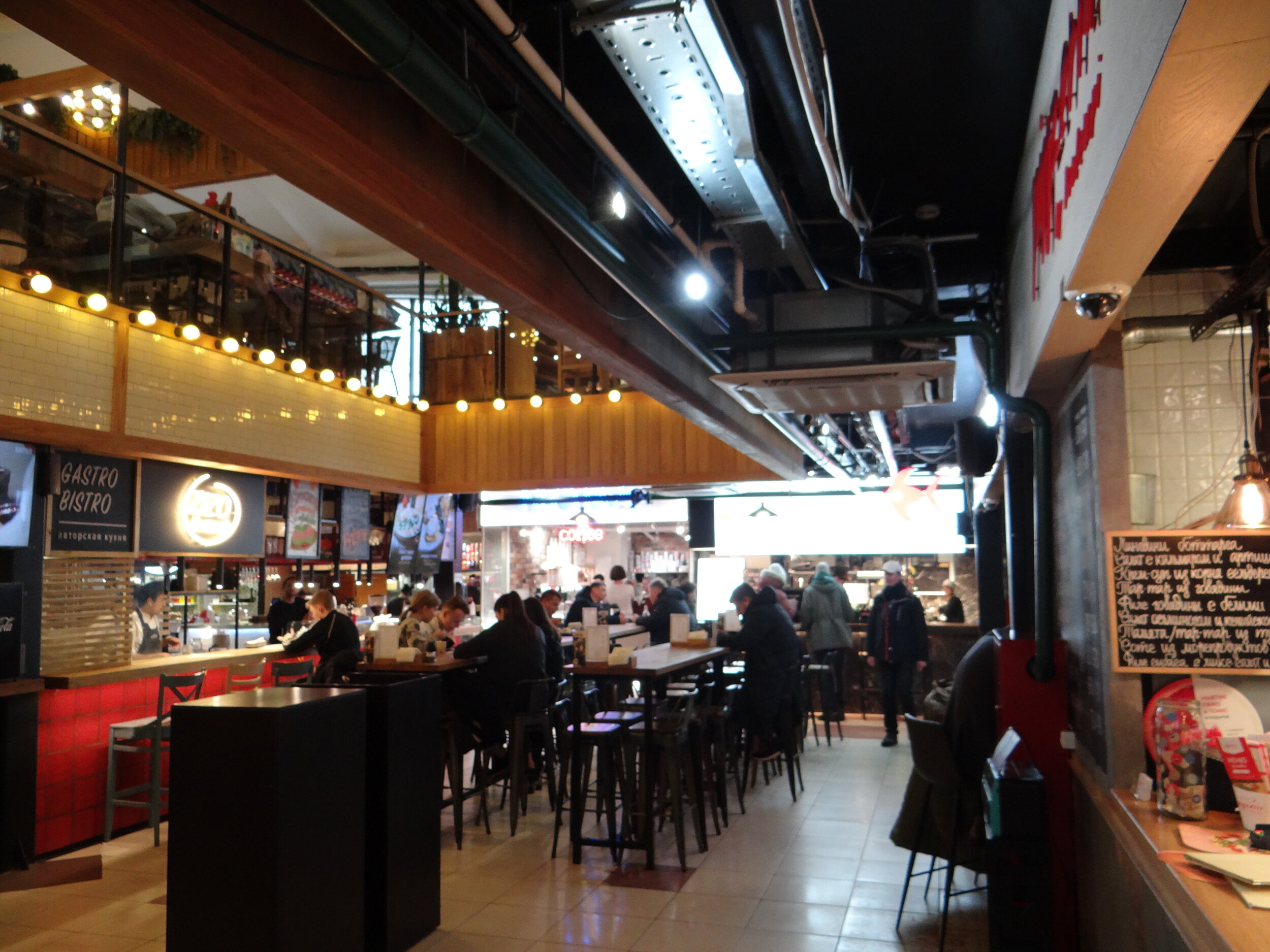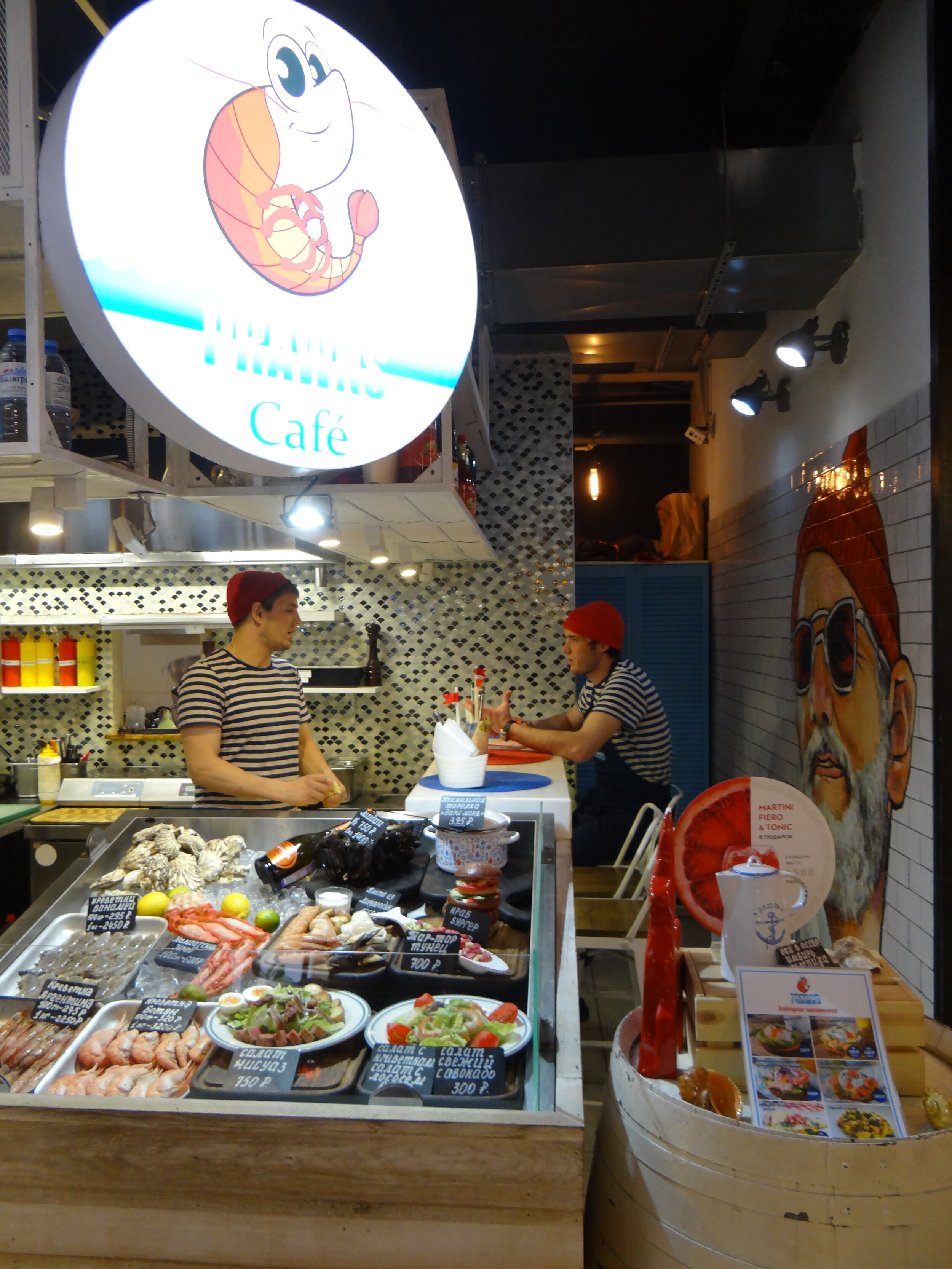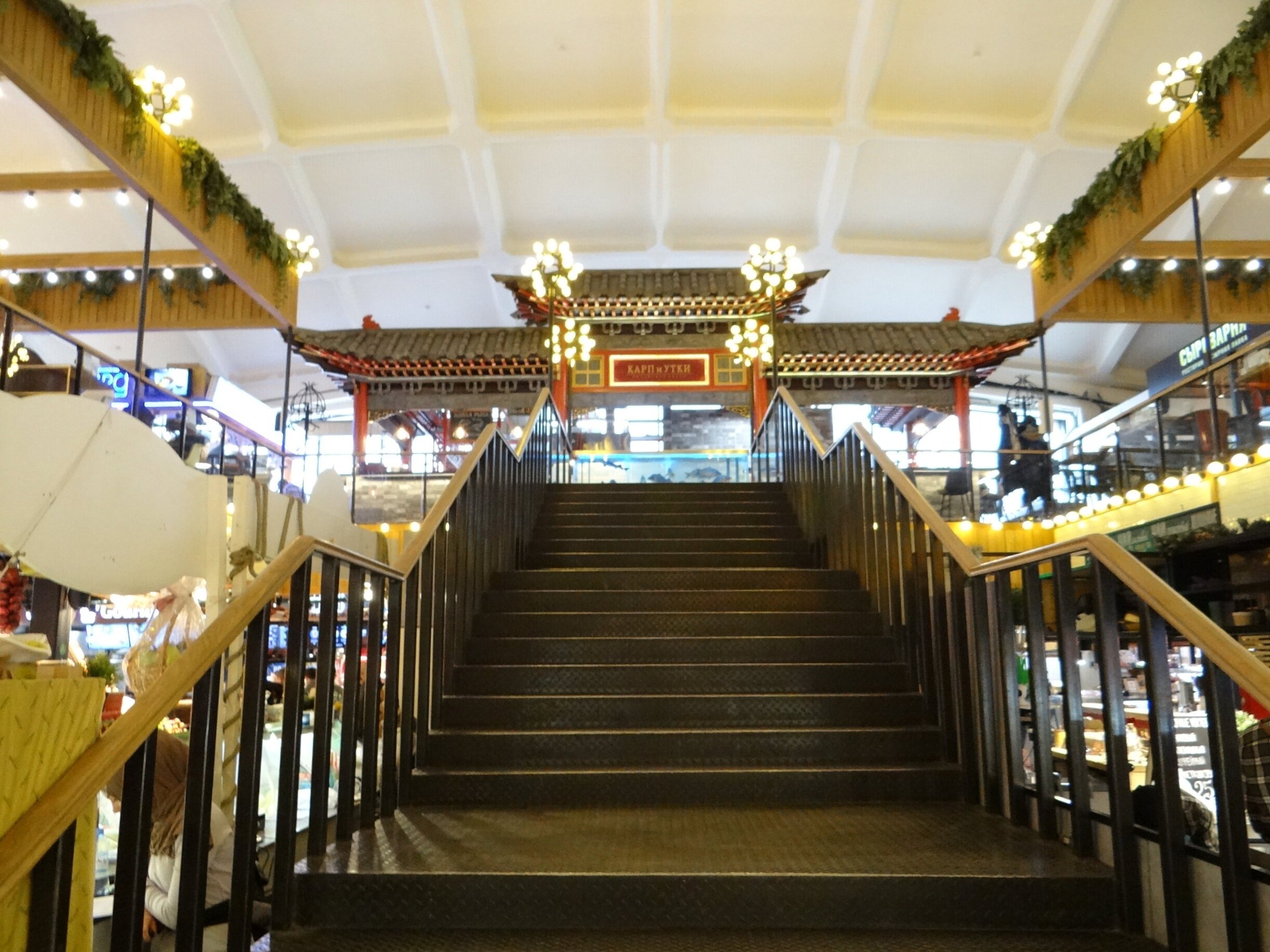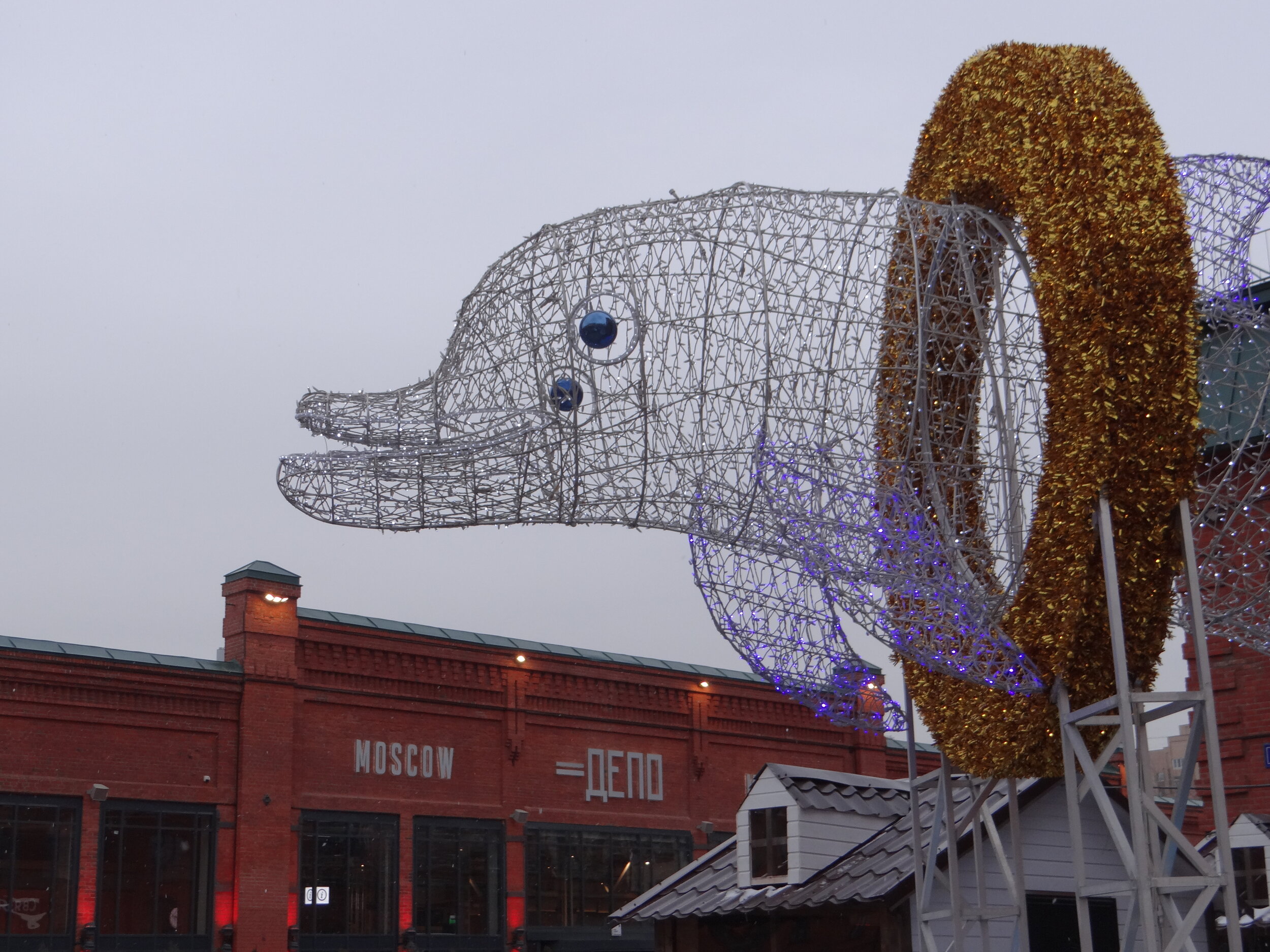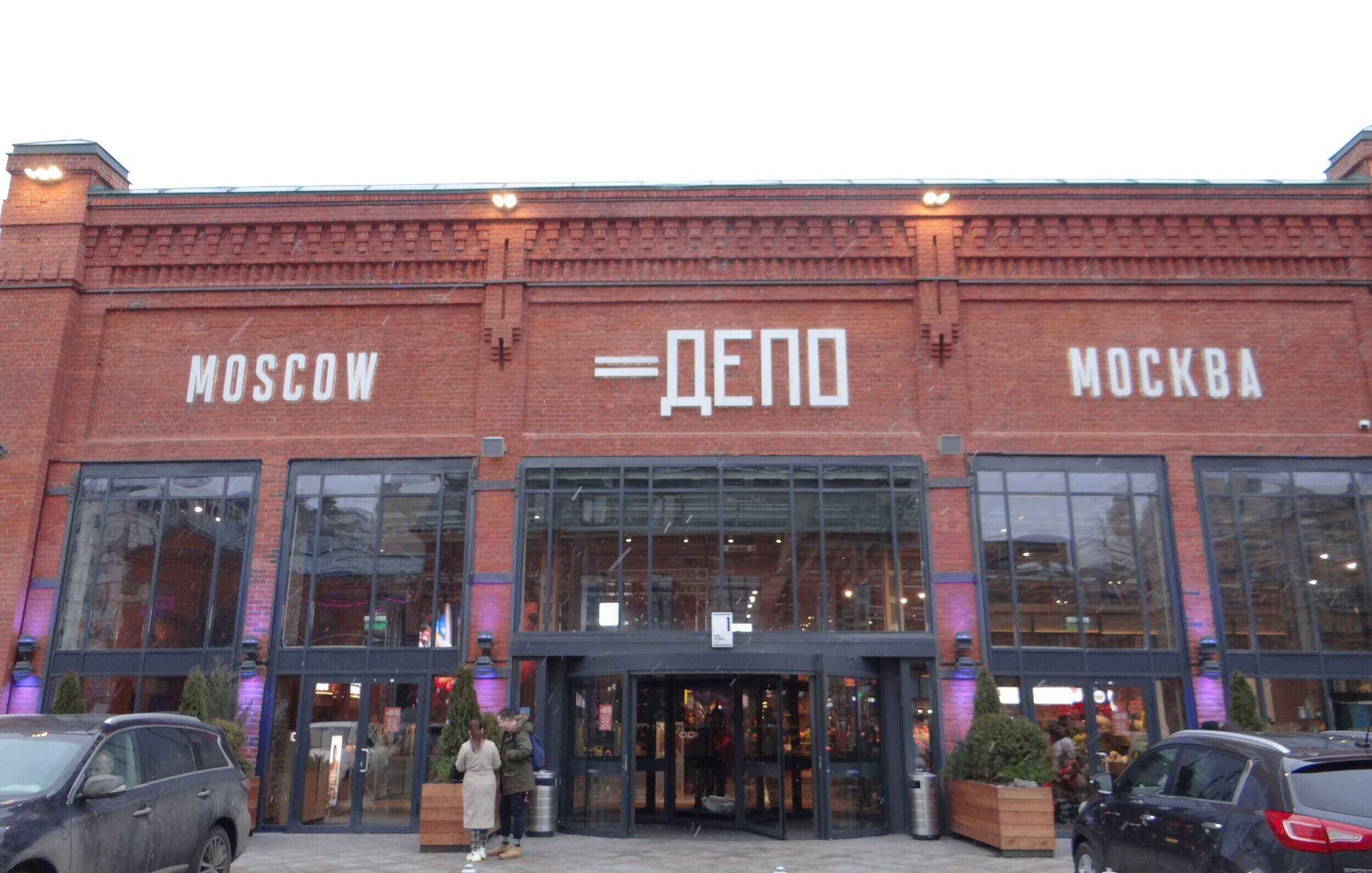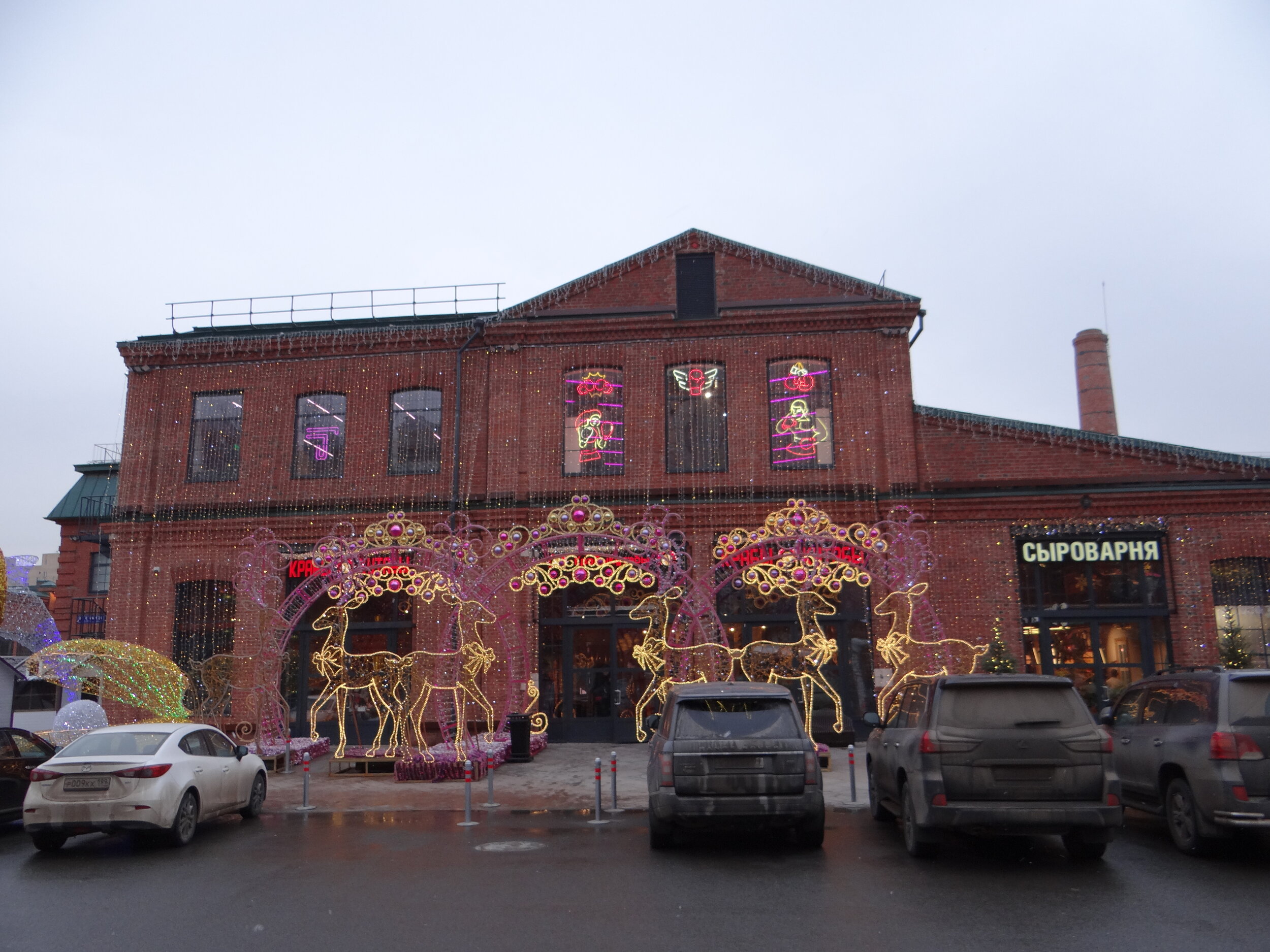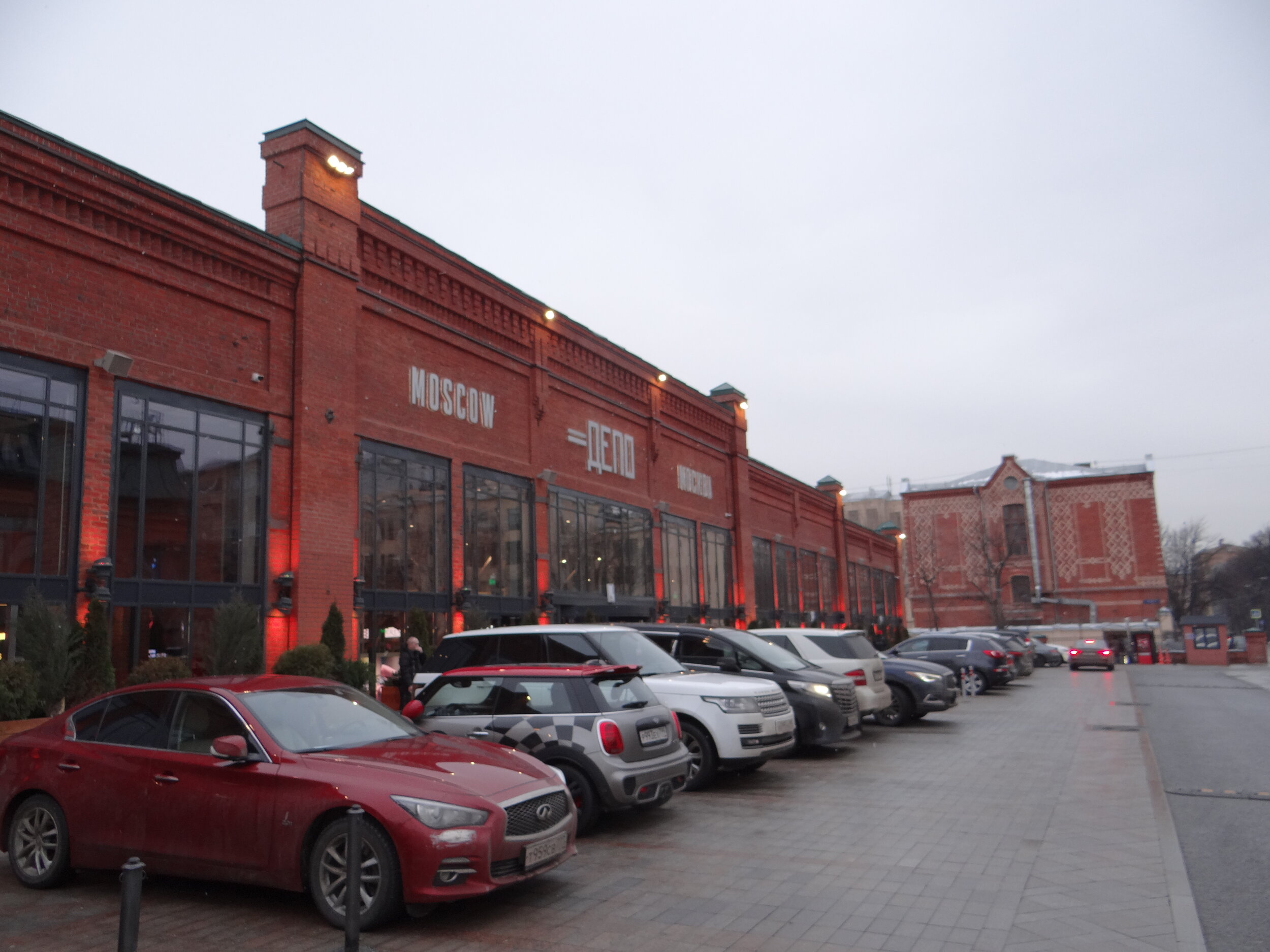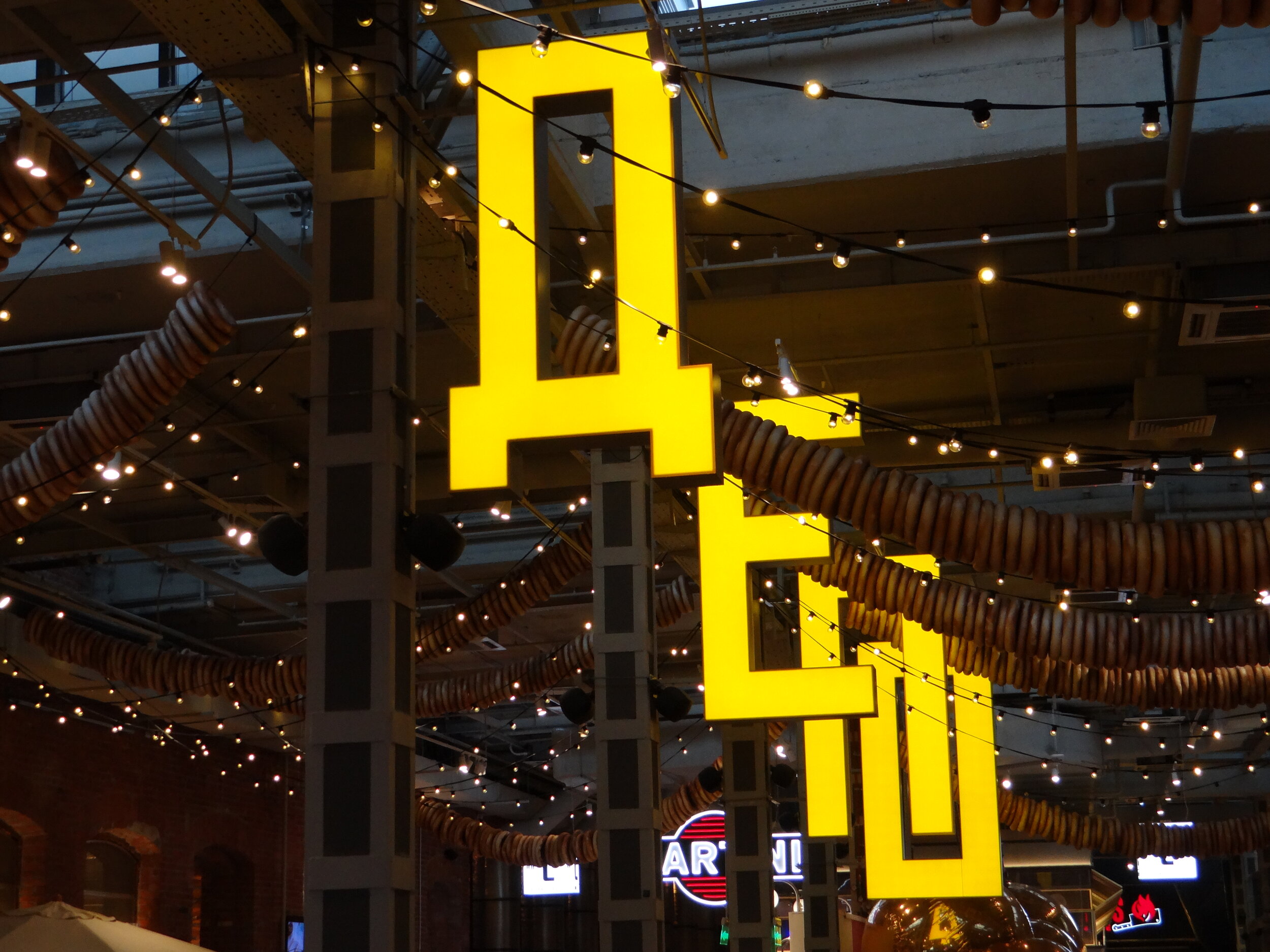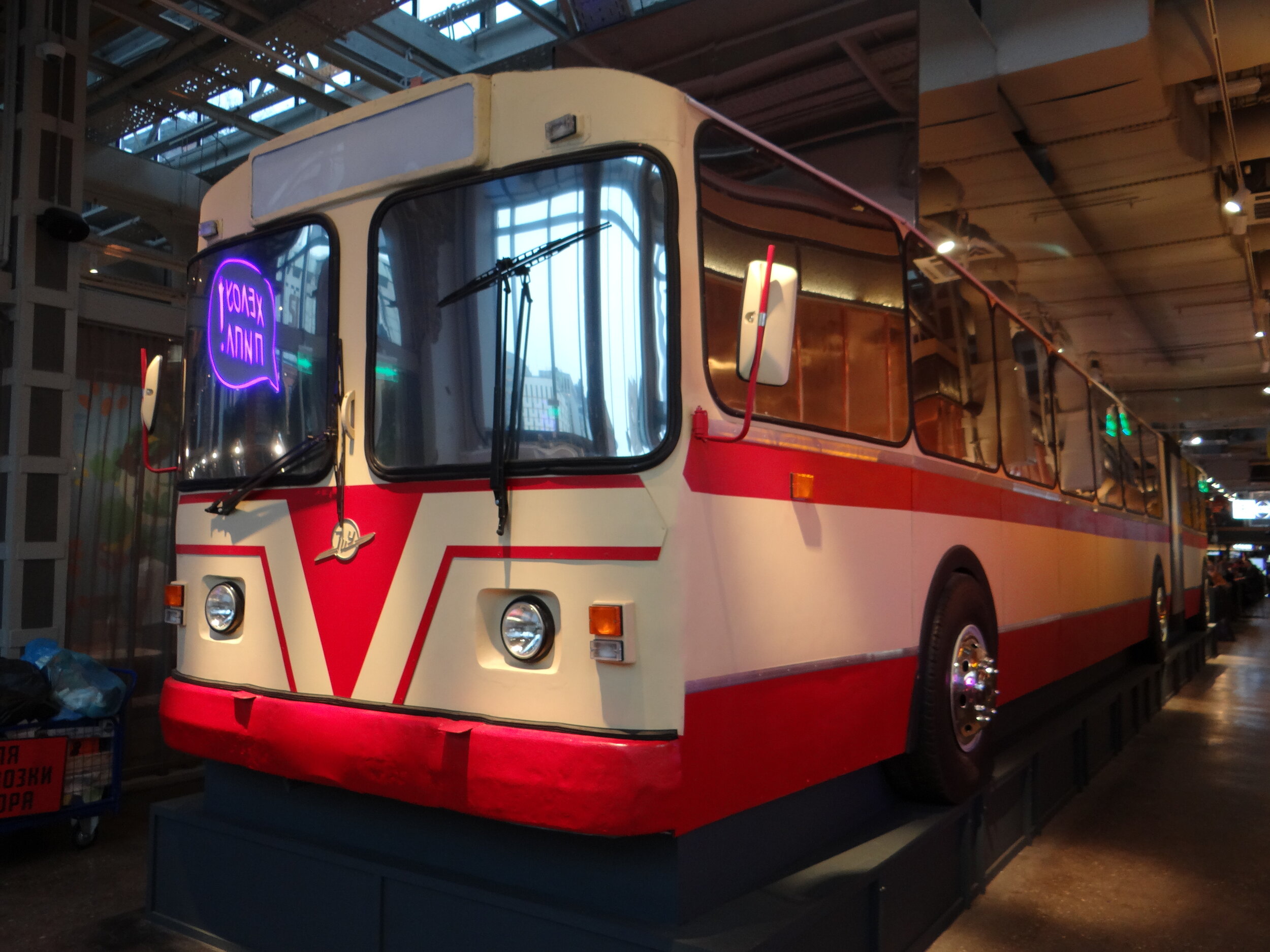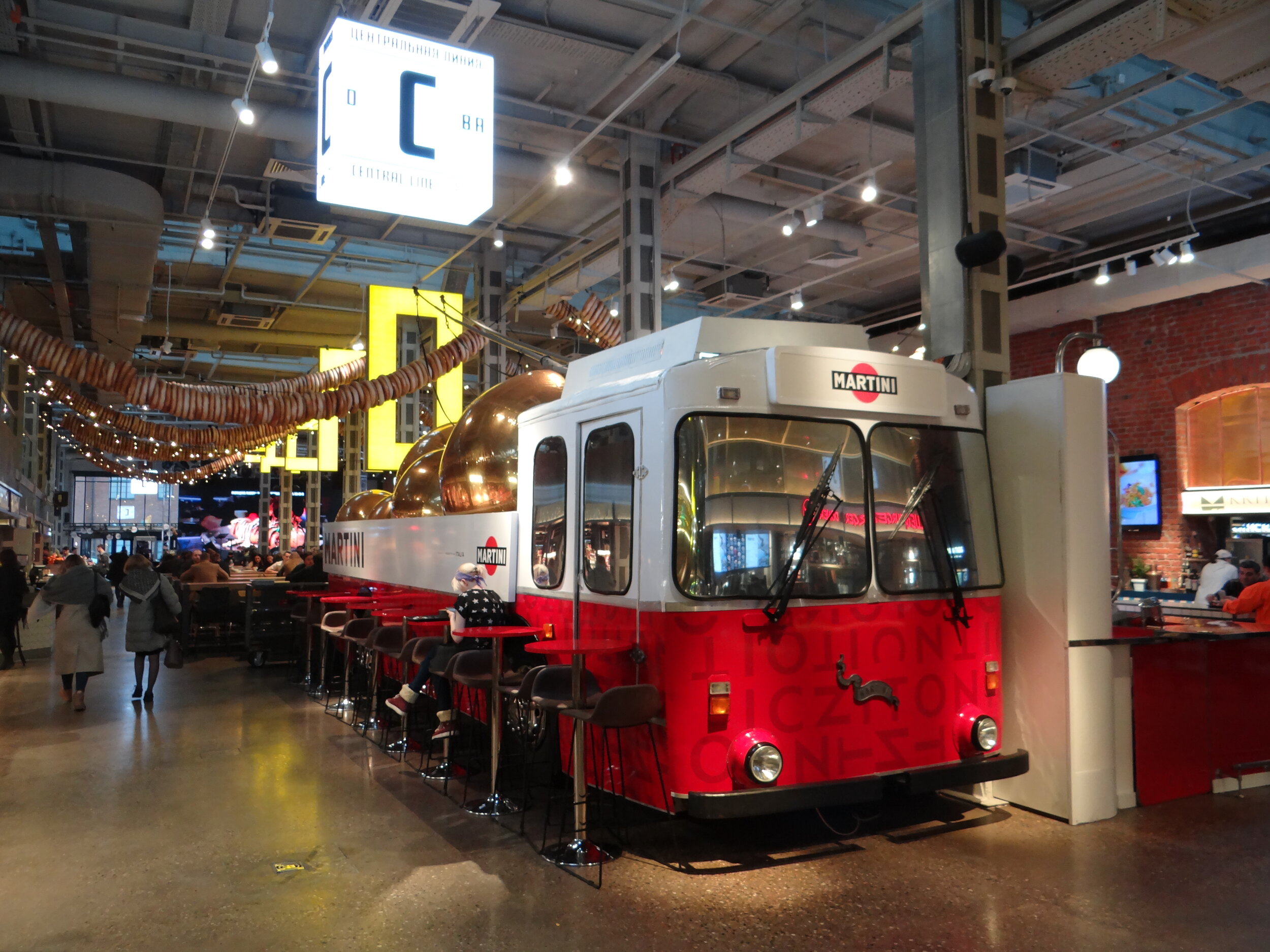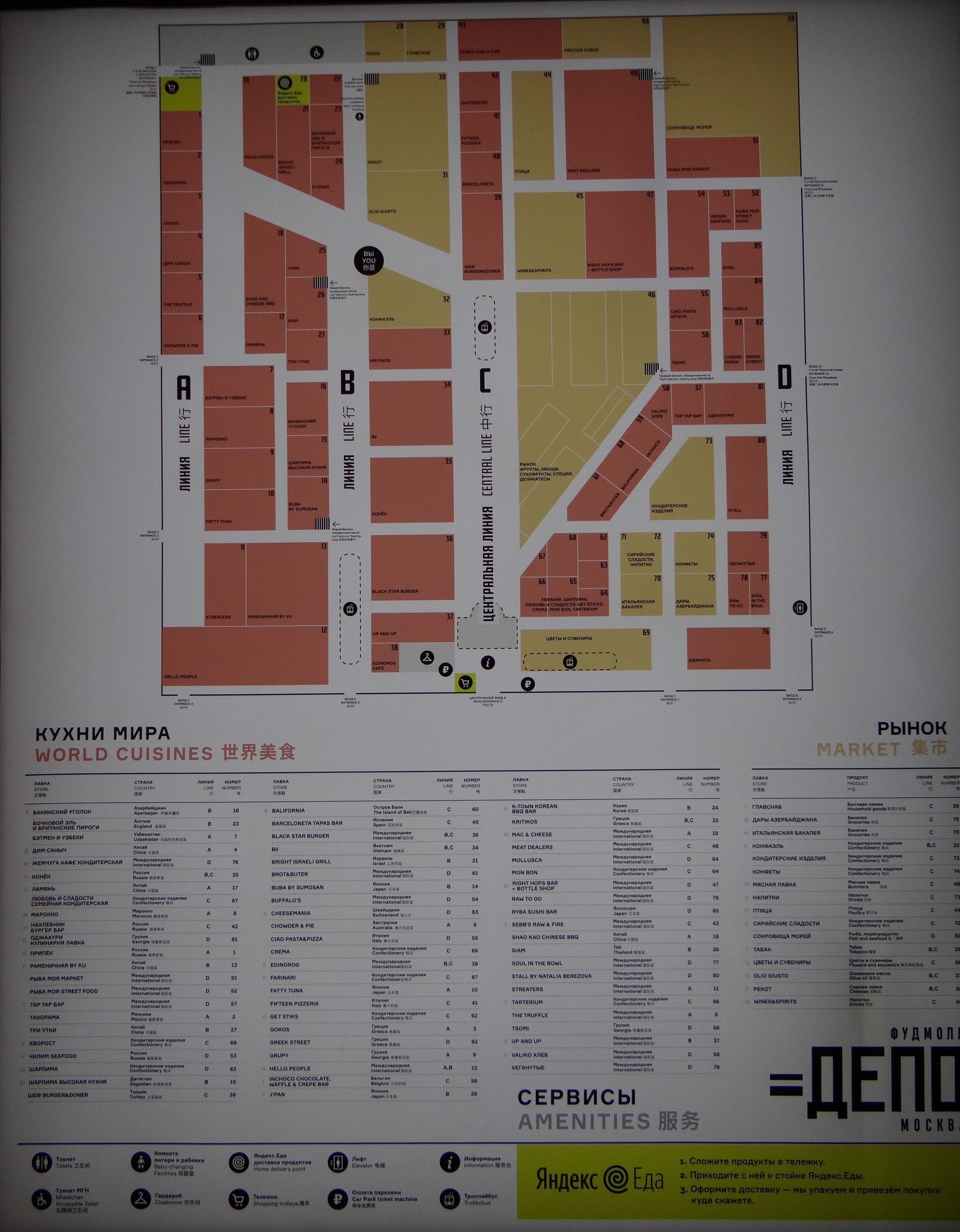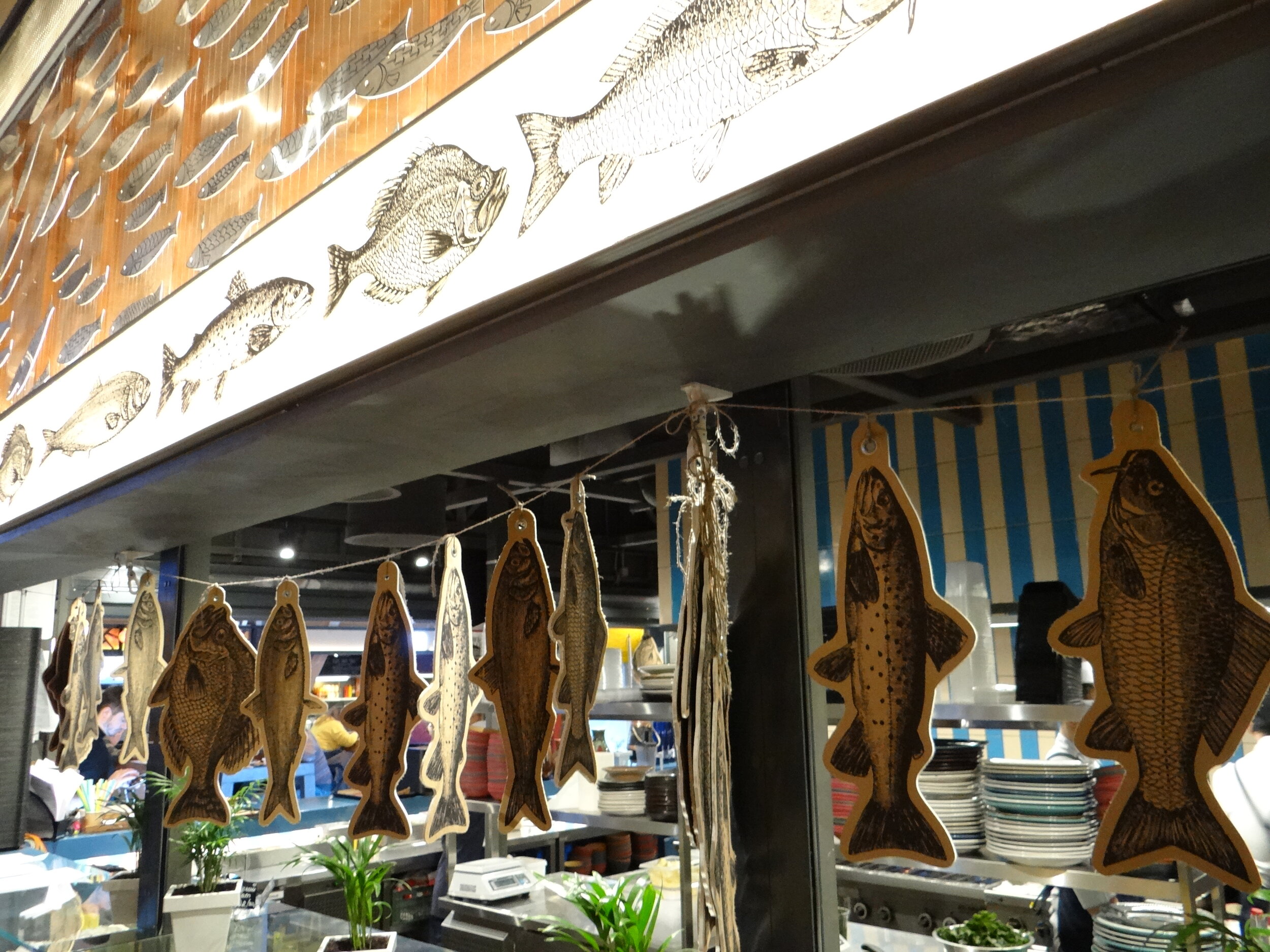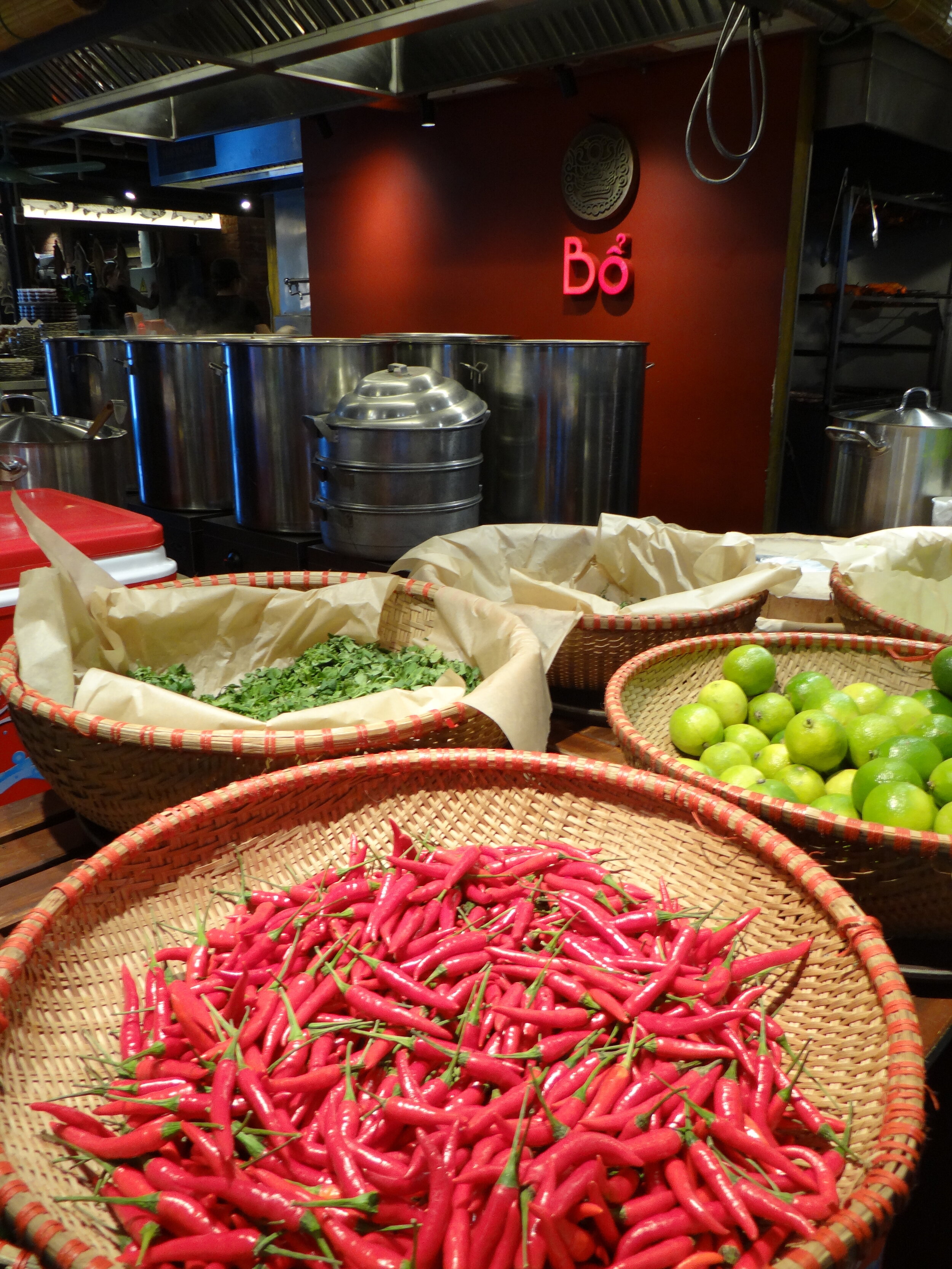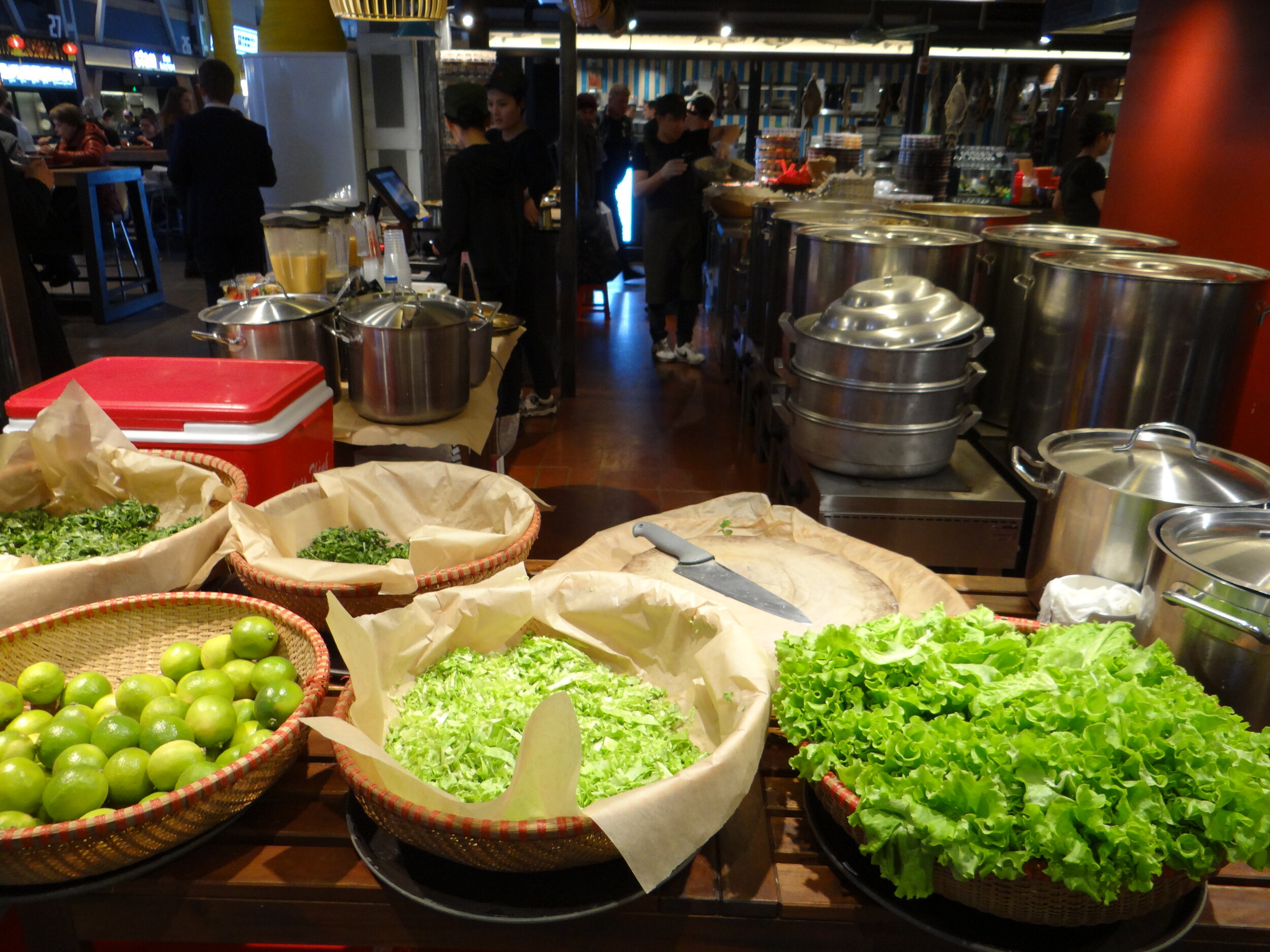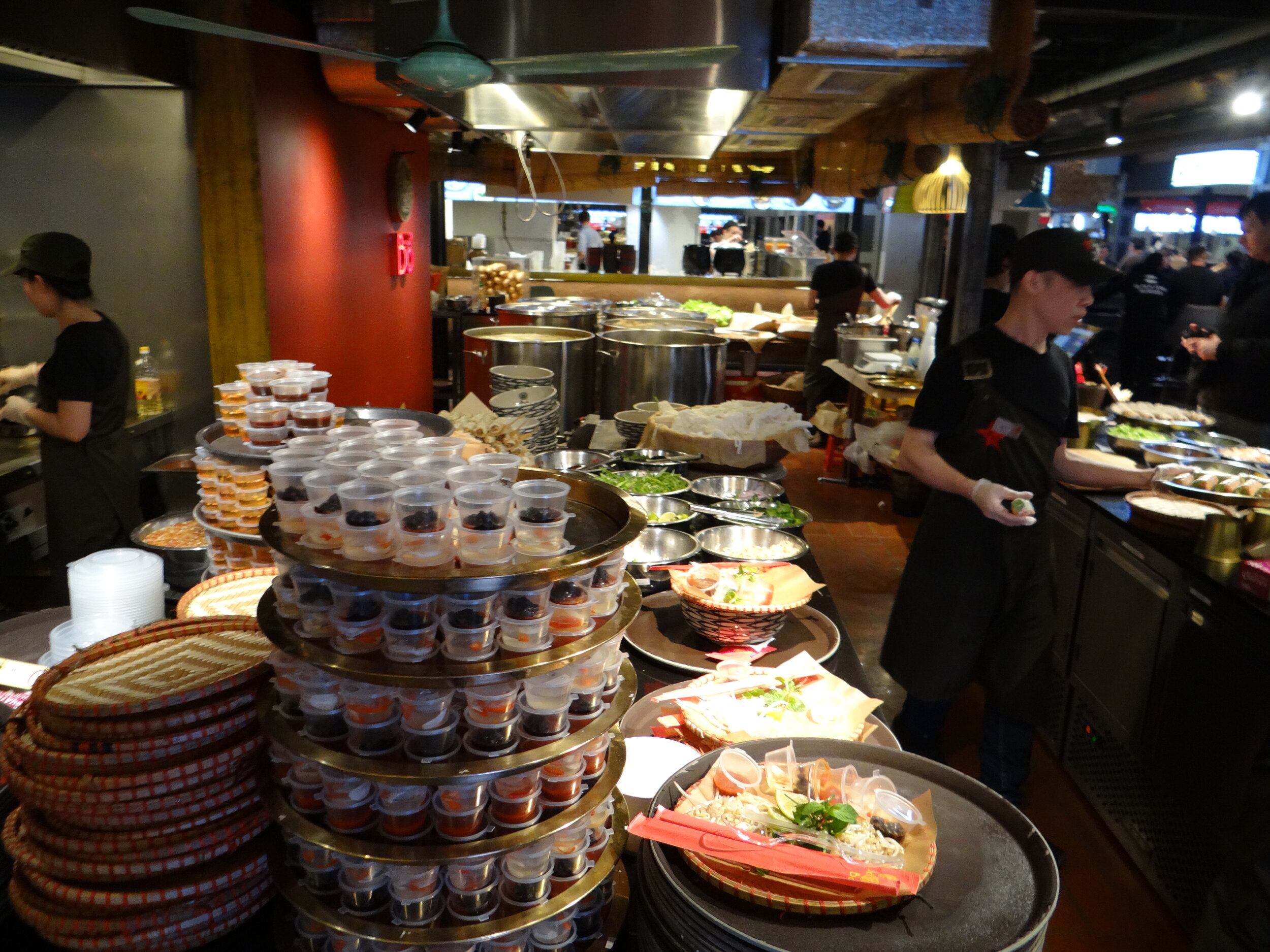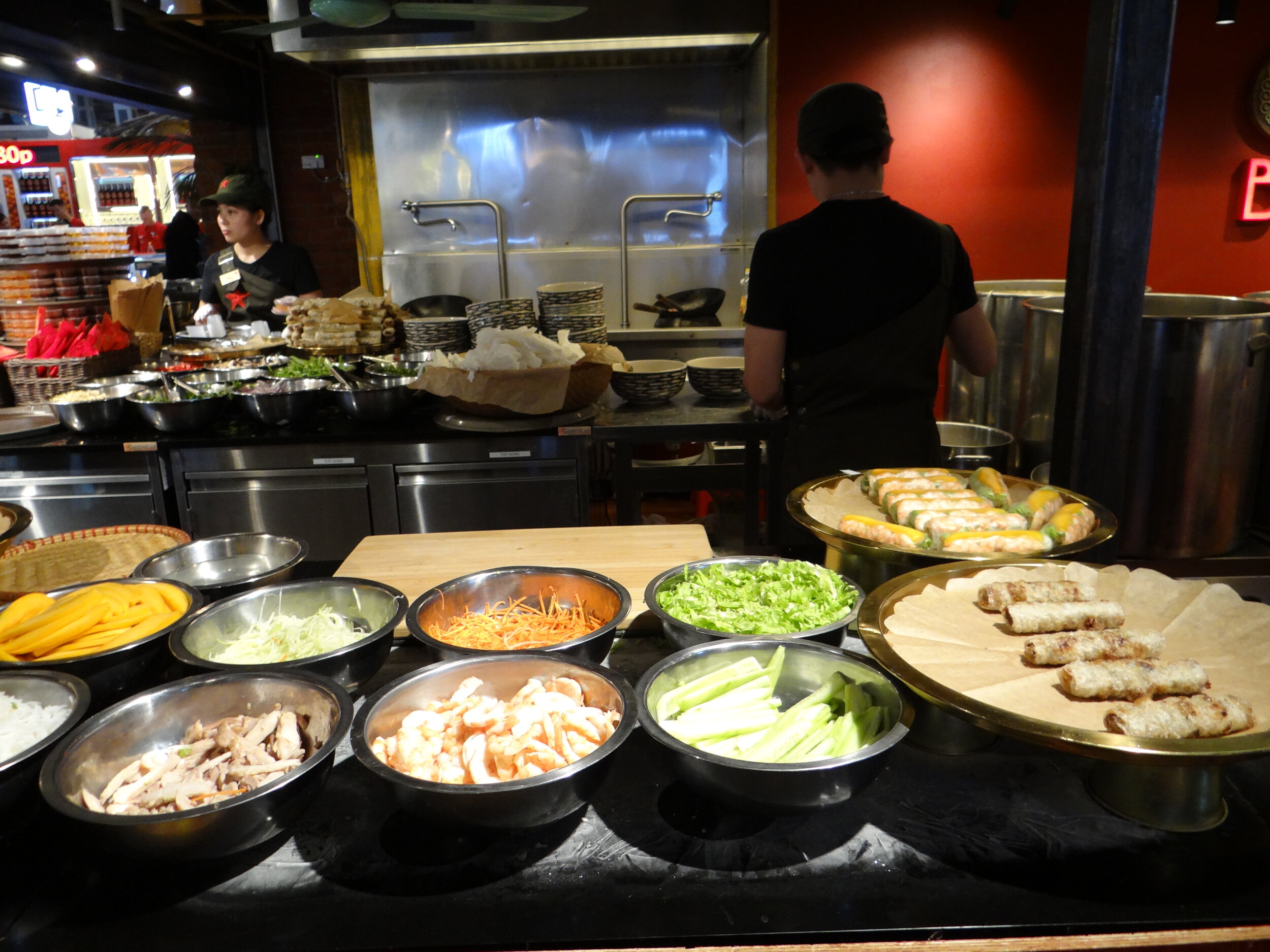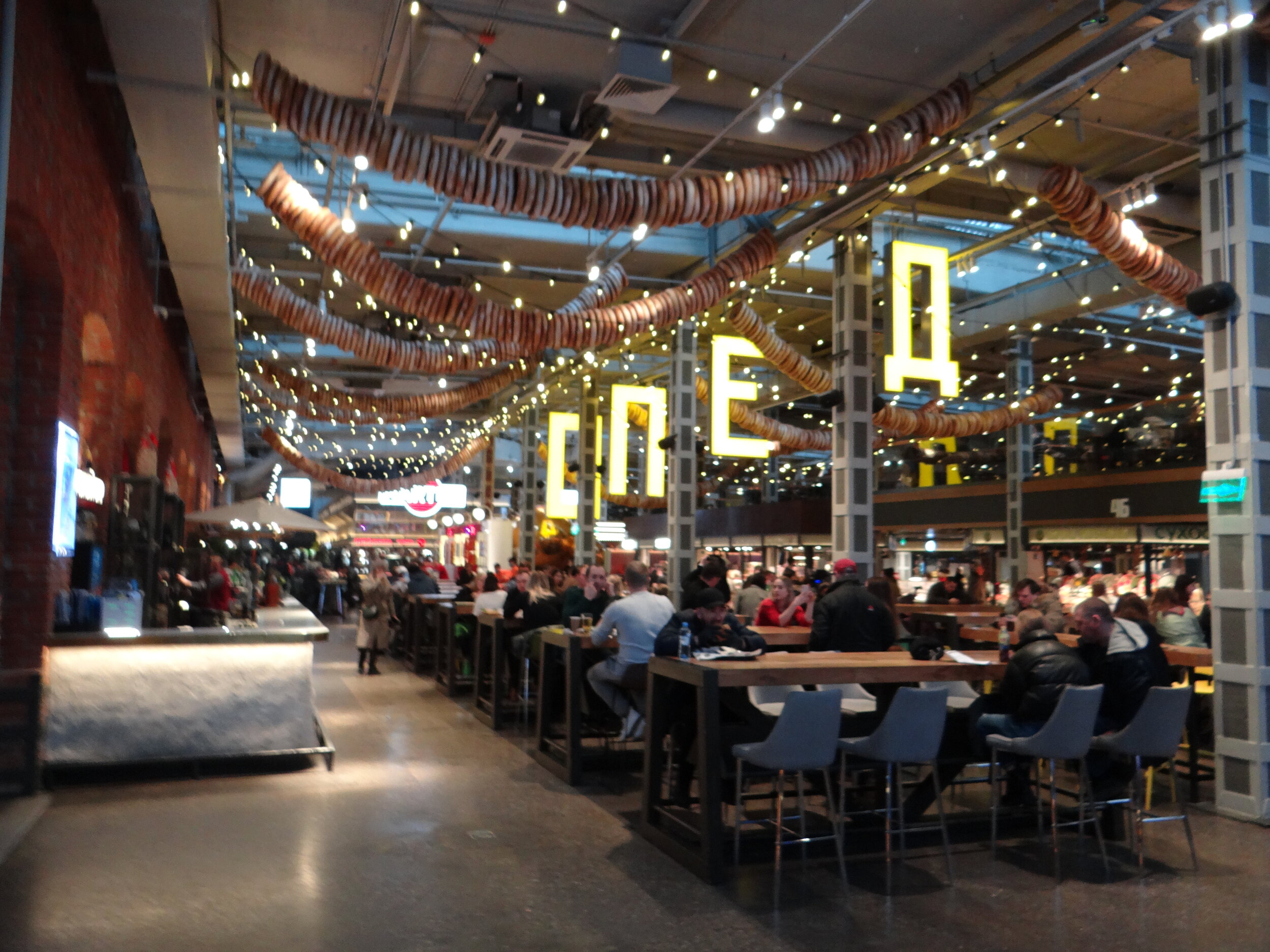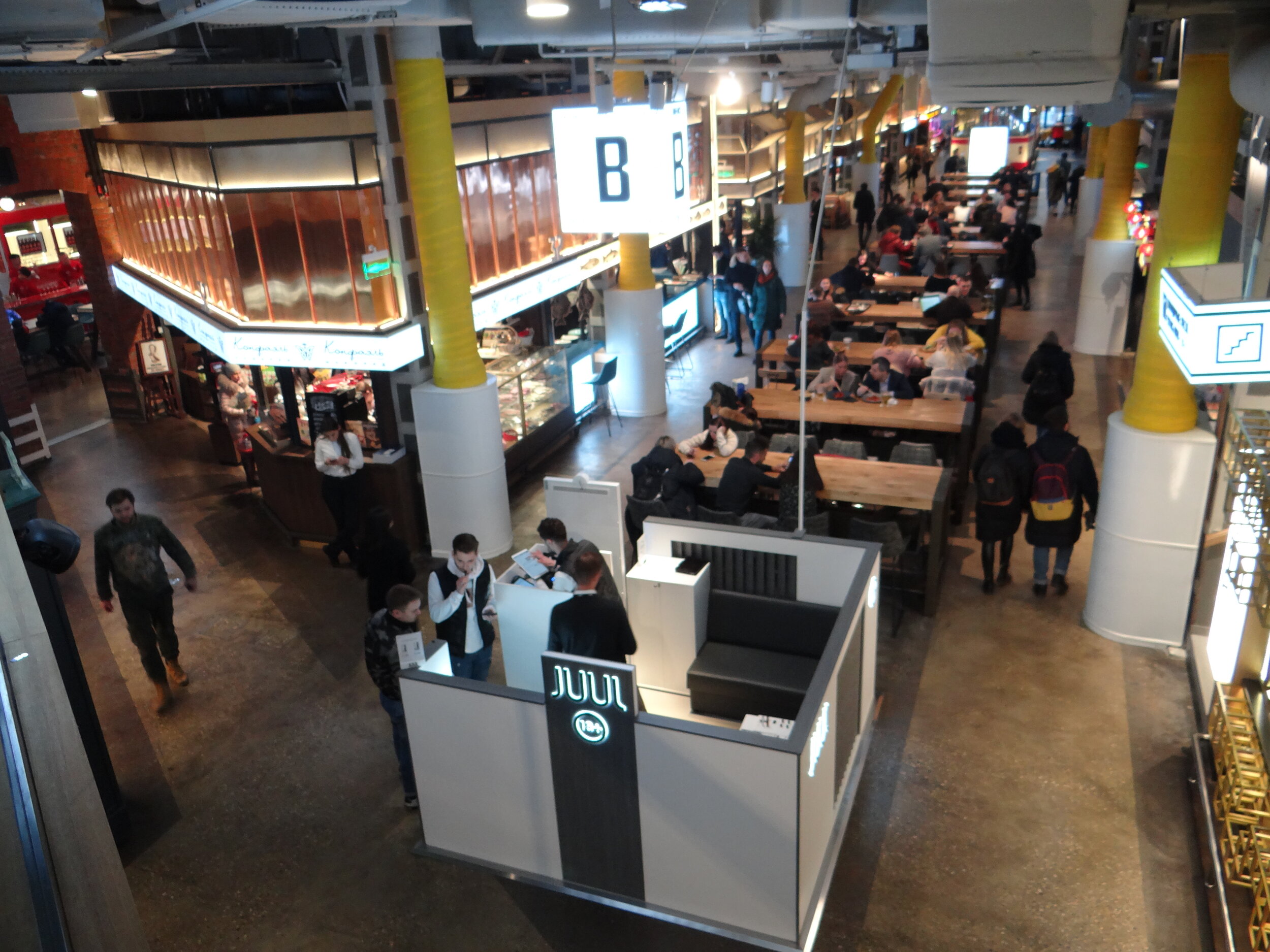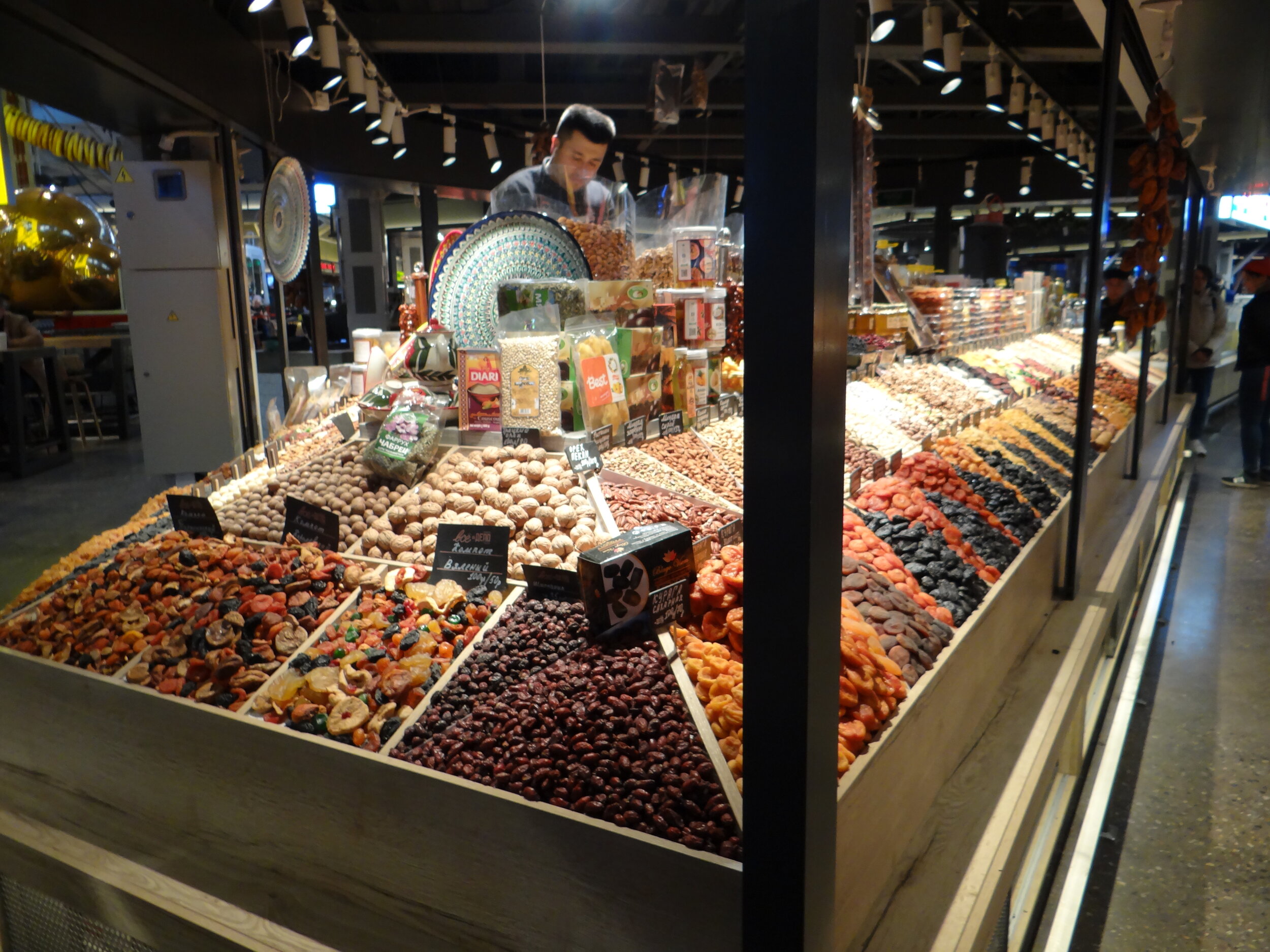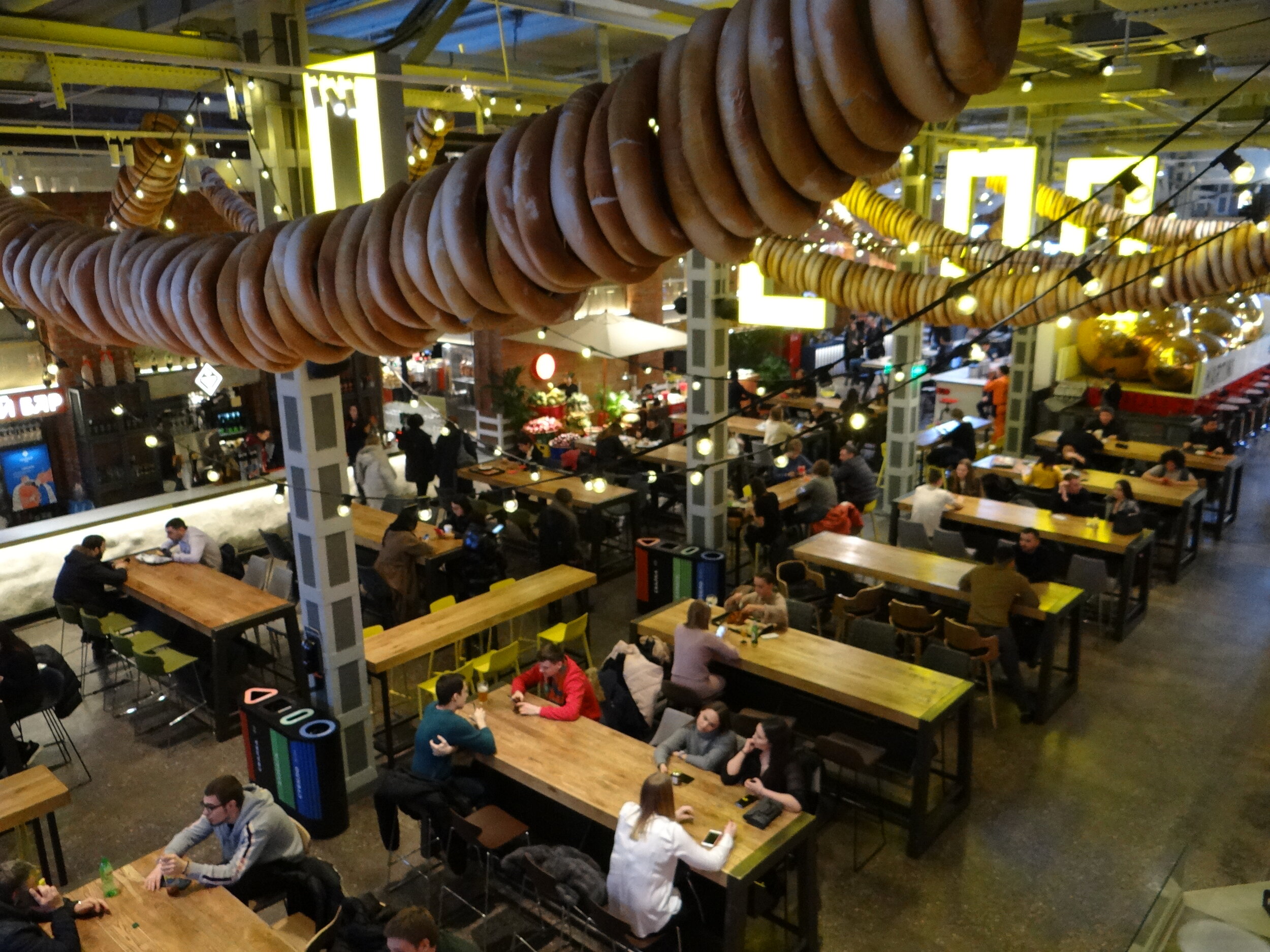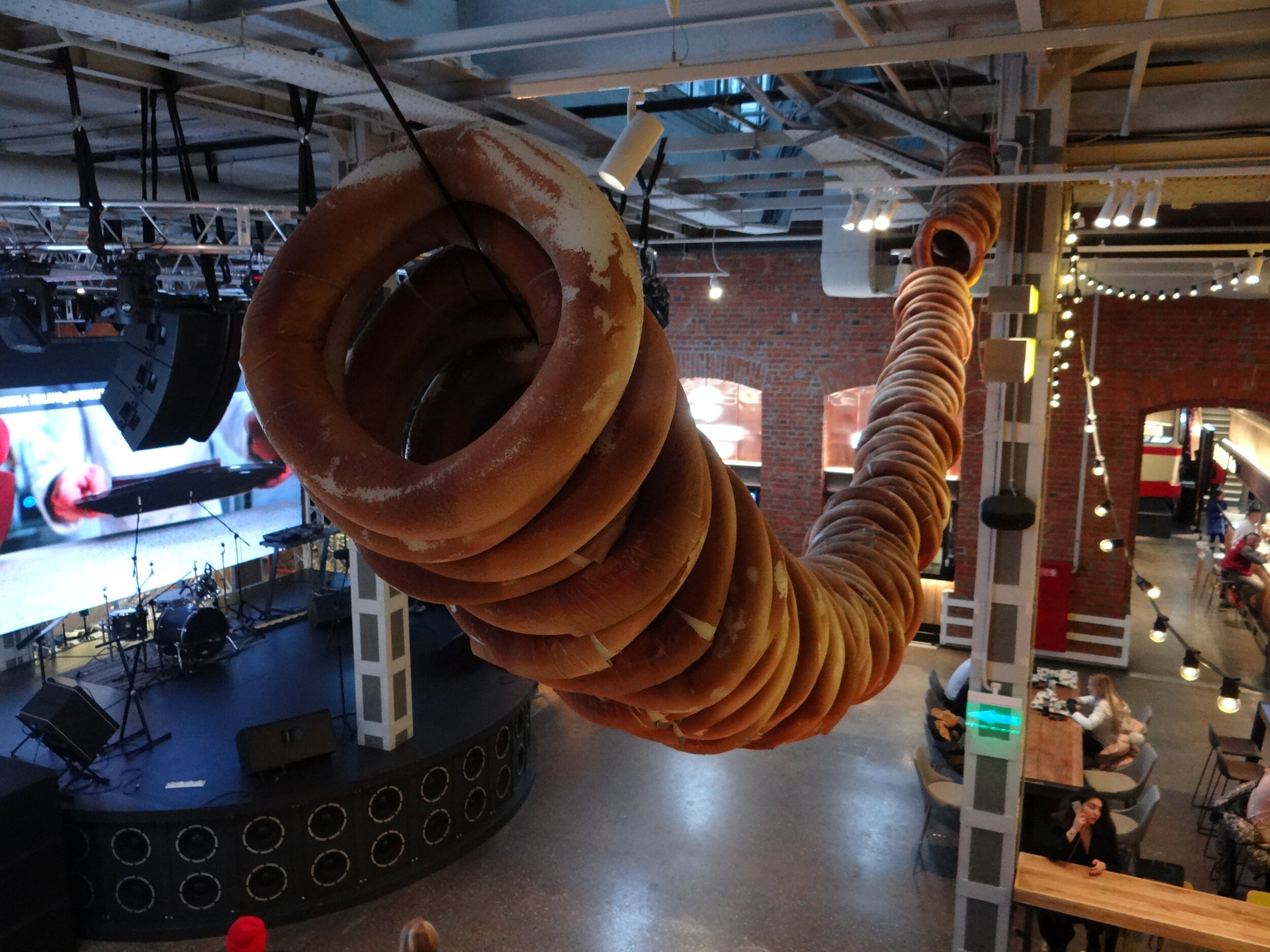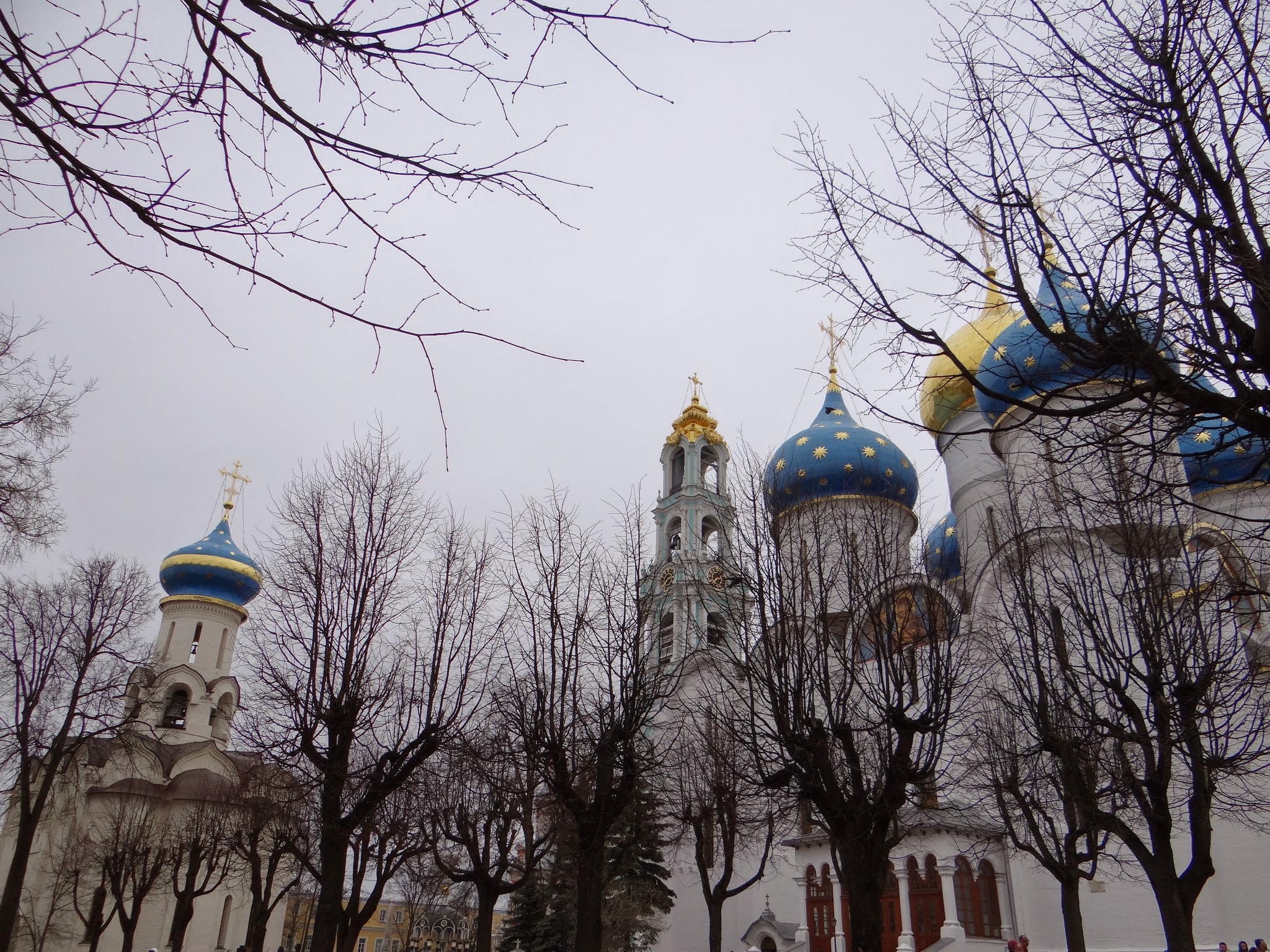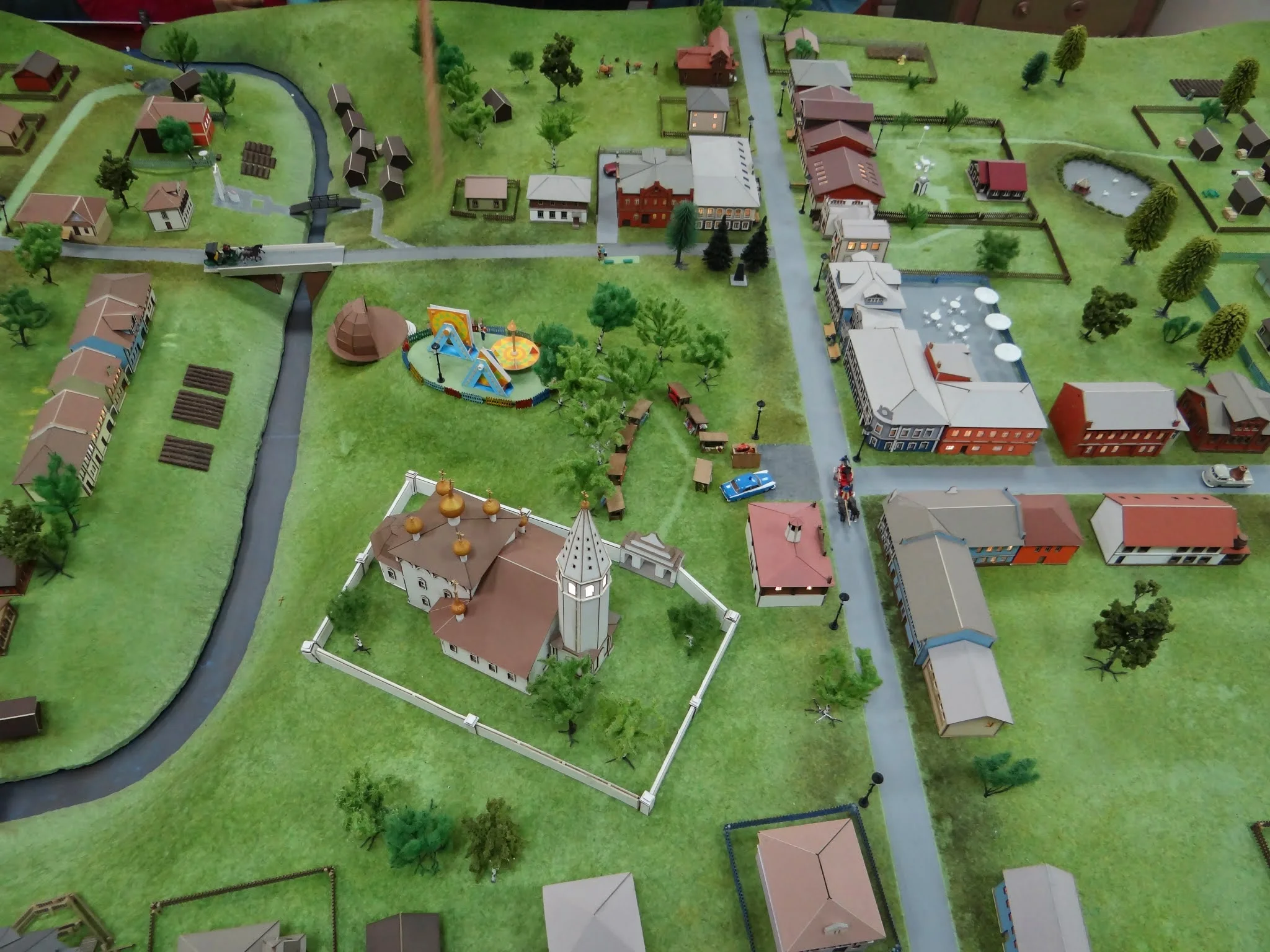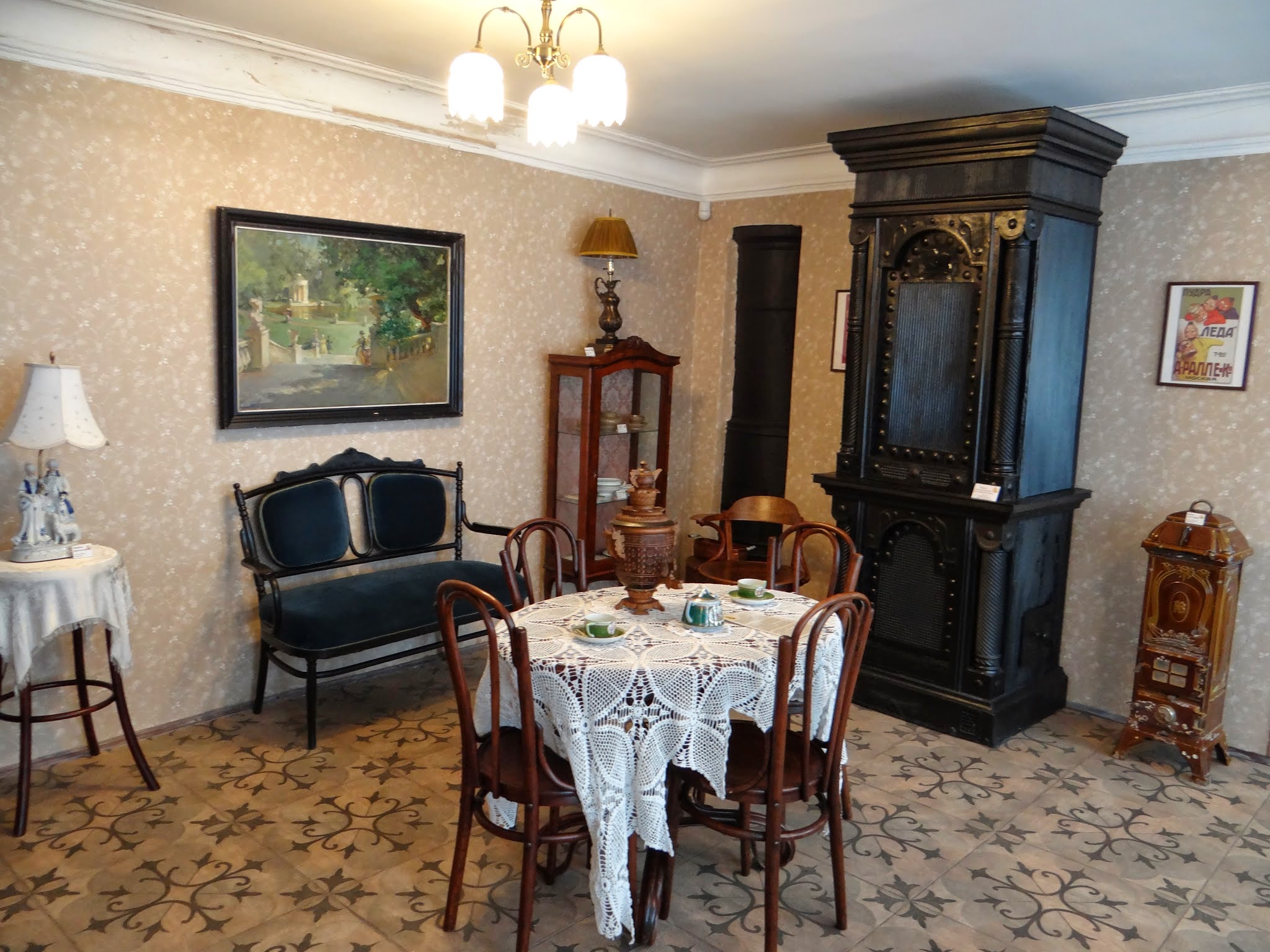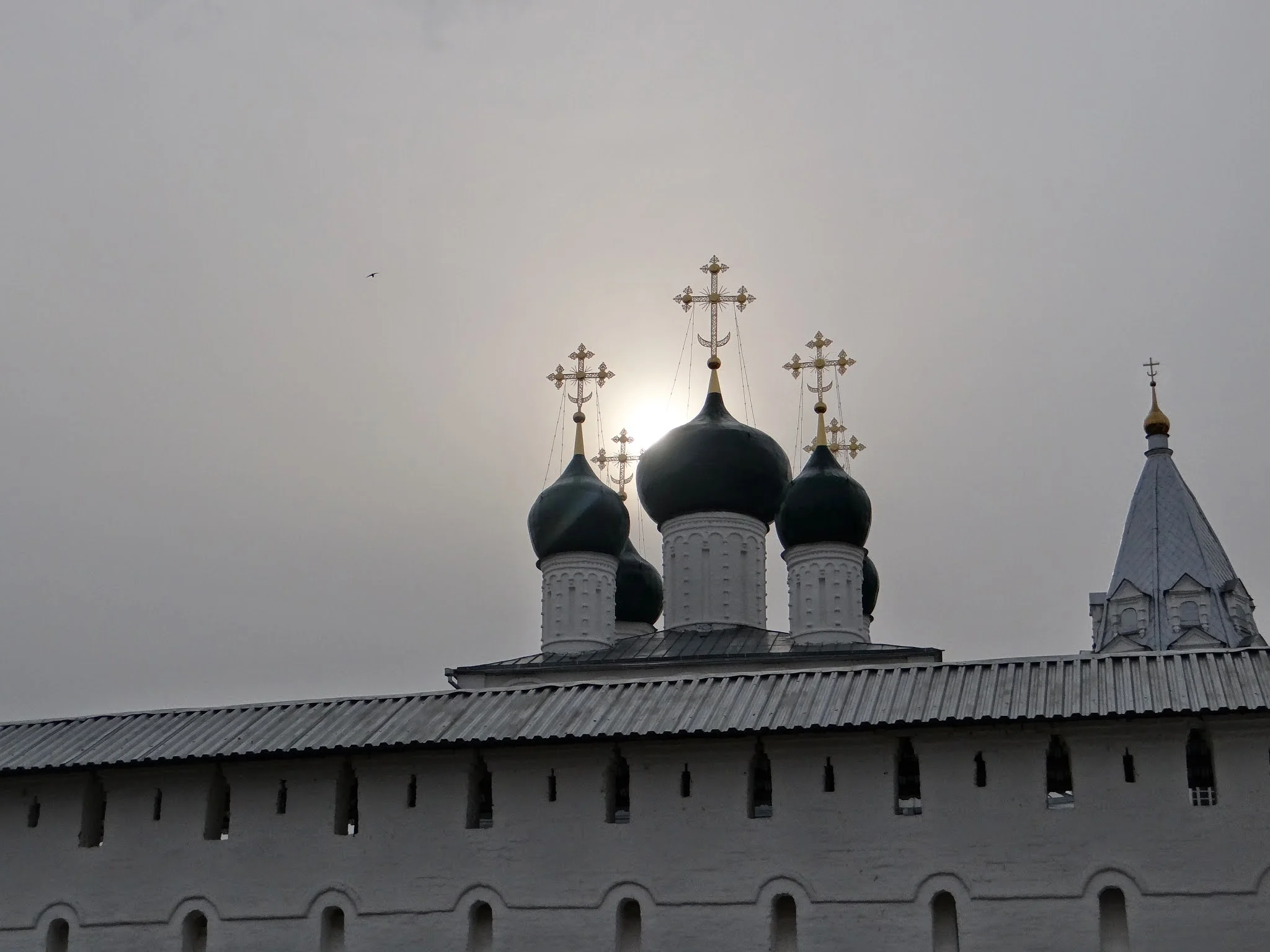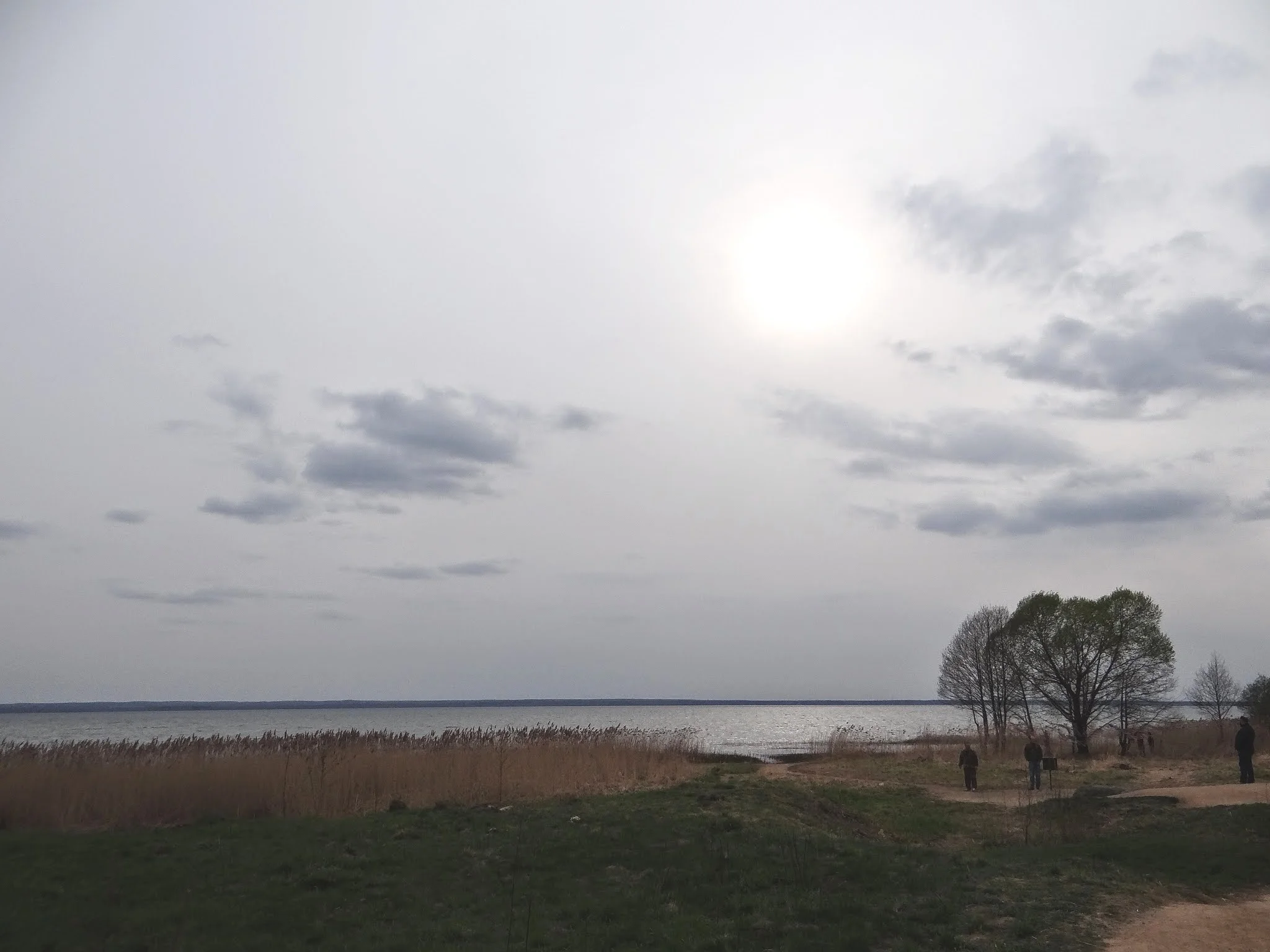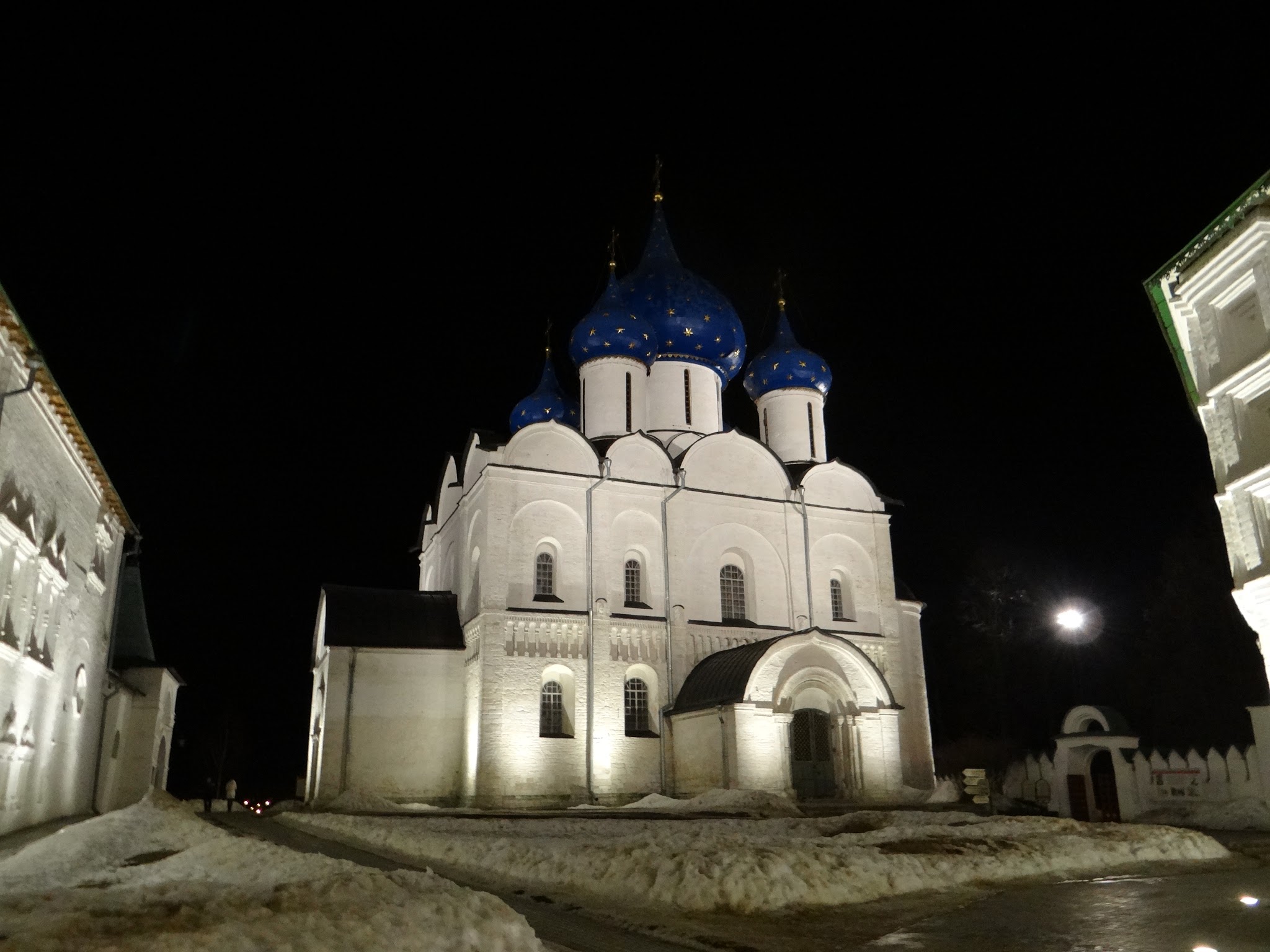3 Food Courts that are Redefining Moscow's Culinary Experience
A world of flavours in the heart of Moscow
The emergence of Moscow as a gastronomical capital has already been well documented and one of the great food stories of the last decade.
But a less reported aspect of this trend is the fact that, alongside the upmarket (and often overpriced) award-winning restaurants, a whole new breed of food courts and markets have also popped up in different areas of the city, offering an impressive selection of international cuisine choices at democratic prices.
Truth be told, there were already plenty of casual dining options in Moscow, but the novelty is in how these have now been brought together, literally, under the same roof, recovering some emblematic historical buildings along the way and transforming how new generations of urbanites eat out in the Russian capital.
Where to find Moscow’s best food courts, food malls and gastronomic markets?
Read on to enter the Moscow food court revolution!
Tsentralniy Rinok (Центральный рынок) - “Central Market”
True to its name, Moscow’s Tsentralniy Rinok (or “Central Market”) is located right in the middle of one of the boulevards that ring the inner area of central Moscow.
A market of some sort has existed at this spot at least since the mid-19th C, although it was not until later in the mid 20th C. that a proper market building was built. Like other institutions in Russia, the market suffered during the messy years following the fall of the Soviet system and it was closed in 1994.
It would take over two decades for a new project for the Central Market to be reborn. In 2017 Tsentralniy Rinok re-opened. It’s external appearance had been more or less preserved, but inside it had gone through an total and thorough redesign, an entirely different concept.
Tsentralniy Rinok (Центральный рынок)
Rozhdestvensky Blvd, 1
Moscow 07031
https://moscowcentralmarket.ru
Metro: Trubnaya / Svetnoy Boulevard
A modern food court in a classic building
Unlike other Moscow food courts, Tsentralniy Rinok is devoted almost entirely to eating out. No market stalls here, but close to 50 casual eating stalls representing a broad diversity of different cuisines from around the world.
This international focus is actually one of the differential points of Central Market. There are, of course, some food outlets offering foods classical of the region, for example, food from the Russian north or Georgian food (there’s even has a bakery where you can see how bread is baked in a traditional oven), but most of the space is devoted to specialities from other parts of the world, Moroccan tagine, Swiss raclette, Mexican tacos, Japanese food, Chinese food and more….
Besides some classics, like Chinese food (below), there is also a re-evaluation of specialities from the Russian regions, such as “northern cuisine” (above). Also the idea of sourcing and traceability is also making inroads as you can see in this illustrated poster map that depicts where the different types of fish and seafood at the Central Market have been sourced from.
Most of the action is at the central food court.
The market-like purpose-built architecture has facilitated the structuring of the market offerings all around the central space on the lower floor.
There are also a (less busy) upper floor and a lower ground floor.
The structure of the building is the original, but the inside has been completely redone, including the roof that has also got some greenery in the process!
Usachyovskiy Market (“Усачевский рынок”)
Usachevskiy Market traces its roots back to the 19th C. when a trader called Usachev was based at this spot on the Khamovnikov (Хамовников) area of Moscow.
Since 2017 Usachevskiy Market has enjoyed a new lease of life after undergoing extensive renovation.
Compared to the other two food courts-markets featured in this post, Usachevskiy market is still primarily a market, with stall overflowing with all sorts of fresh produce.
Nevertheless, there is also a food court at Usachevskiy market also quite a few interesting options for those that looking for a spot where to eat out.
Seafood is a particular star here, with several places offering a selection of fish, oysters and other crustaceans. But there are also some international choices, from Greek to Asian food.
Depo (“Депо”)
I have deliberately left for last what is arguably the largest and most diverse of Moscow’s new generation food courts
“Depo Moscow Foodmall”, which opened in 2019, claims to be the largest food mall in Europe and while I have no way to verify this, it is certainly very large and a remarkable sensory experience.
Its name “Depo” is not coincidental: it is housed in what used to be the maintenance depot of Moscow’s municipal bus company.
Depo is part of a rather large red-brick compound very close to Belorusskaya station, one of Moscow’s main business hubs (many multinational companies have their offices nearby) and the terminus of Aeroexpress, the direct fast train to Sheremetyevo airport.
In addition to the foodmall, some of the nearby buildings house restaurants, cafés or shops, thus helping make of this also a rather busy culinary entrepot
Depo Moscow Foodmall
Lesnaya Ulitsa, 20
Moscow 125047
Metro: Belorruskaya or Novoslobodskaya
Welcoming visitors at Depo are some of the old buses that used this facility when it was a repair and maintenance shop. A nice touch that, in addition to paying homage to the place’s heritage, adds a touch of character and uniqueness (not to mention that old buses can make for a nice Martini bar too!).
Before making you choices I would recommend any first time visitors to Depo to walk around and check out the different aisles thoroughly, the amount of food choices is simply staggering!
More than 60 food establishments have a stall at Depo, with pretty much all major culinary styles from around the world represented here: Russian, Central Asian, Chinese, Vietnamese, Italian, Middle Eastern, Greek, Japanese…there’s even a traditional English pie shop!
Seating is available on a couple of larger open halls, but also in myriad other smaller spaces scattered on two levels all over this larger former industrial setting.
A little army of service staff makes sure that all is impeccably clean. Make sure you don’t leave your food try unattended for even a few minutes…chances are that it will be removed and thrown to the bin!
If there’s a place where the paradox of choice can be plainly explained and experienced, this is Depo! Granted, it may not be high cuisine, but we are talking tasty, varied and reasonably priced casual eating here.
Just imagine working in one of the nearby office blocks and compare with the typical workplace canteen. Or let’s say you can’t make your mind and want to try small portions, mixing different tastes and products. Or you are a group with varied preferences. Problem sorted!
In addition to the ready to eat food, there is also a market at Depo, where you can buy different types of products, from dried fruit to fresh vegetables and imported products. Unlike the restaurant stalls, it is rather upmarket here.
Talking upmarket…there is even a small Gucci store within the premises!
And it is not just about food…the central hall at Depo has also a stage for all sort of shows and performances.
In short, the latest major addition to Moscow’s food scene has lots going for it. Definitely a must visit if you happen to be around the Beloruskaya/Novoslobodskaya area and feeling hungry!
Winter in Sakhalin, Russia's largest island
Russia’s best kept secret
Sakhalin is the largest Russian island. It is larger than Ireland, yet, barely half a million people live on it, most of them in the capital, that lies at its southern tip.
I had wanted to visit this far-flung part of Russia for already quite some time and the opportunity just came up during winter time, which is sort of low season there, but, on the other hand, allowed me to discover a proper snowy wonderland where few tourists venture.
Right after my trip I published this article on CNN, where I compiled some of my impressions from my visit to the island, but I was left with the feeling that one single piece was not enough to describe this very interesting, off-the-beaten path destination as thoroughly as I would have wanted.
So, I decided to pen yet another post with some extra pictures and additional information that didn’t make it to the CNN article.
Visiting Yuzhno-Sakhalinsk
This was a quick, 3-day trip to Sakhalin.
Take away jet-lag recovery (Sakhalin is 10 hours ahead of Moscow, the city I was flying from) and the morning transfers and waiting time at the airport and I was left with something like 48 hours “effective” hours to explore the island.
So my visit was focused on Yuzhno-Sakhalinsk, the capital city. However, I could arrange a private tour: a half-day excursion along the Eastern coast of the island. And this was a great decision, the experience certainly did not disappoint me! (more on this further in this post).
How to get to Yuzhno-Sakhalinsk
Sakhalin is just 40km north of the island of Hokkaido and there is a ferry that travels between this northernmost Japanese island and Korsakov, a port in southern Sakhalin.
The most practical way to get to get to Sakhalin, though, is by air.
Although rather small, Yuzhno-Sakhalinsk has an international airport with regular connections to Japan, South Korea and China, in addition to Vladivostok, the capital of Russia’s Far East, on the mainland. For travellers coming from Europe, though, the easiest and cheapest way is, in most case, via Moscow.
There are daily direct flights between Moscow and Yuzhno-Sakhalinsk, operated by both Aeroflot and its subsidiary Rossiya, and it is possible to find very reasonably priced tickets if you fly off-season. For example, I could get a ticket for some €350 return, which is rather good for a 10-hour flight!
The airport is not far from the centre of Yuzhno-Sakhalinsk. There is little in the way of public transportation, but a taxi ordered through the Yandex.taxi (an app that I recommend downloading to everyone visiting Russia - it is also the local Uber partner) application should cost no more than 500 rubles (or around €7-8, less than $10).
If travelling in Winter, get some warm clothes, since it can be pretty cold! You have been warned!
By the way, the region of Sakhalin includes also the Kuril Islands (as this poster at Yuzhno-Sakhalinsk airport conveniently reminds us). This is definitely a destination I would consider for another trip, although foreigners need a special permit to be able to visit (the southern Kurils have been the object of a territorial dispute with Japan since the end of WW2).
Yuzhno-Sakhalinsk airport is far from grandiose. In fact, at the time of my visit, its old terminal was showing quite evident signs of ageing and decay. The good news are that a new terminal is already being built next to it following modern standards. It should be ready sometime in 2020.
(You can find more about commercial aviation and traveling by air in the Russian Far East in this article)
Things to do and things to see in Yuzhno-Sakhalinsk
One of the first sights one comes across when driving into Yuzhno-Sakhalinsk is the gleaming towers of the Cathedral of the Nativity.
This is, apparently, the largest Orthodox church in the Russian Far East and it was inaugurated as recently as 2016!
It is located on a hillside elevation on the eastern side of town, right next to two other attractions of the city: the WW2 museum and one of the access points (via lift) to the ski resort of Gorniy Vozdukh (“mountain air” in Russian).
The contrast between the traditional, rather majestic, religious architecture of the cathedral and the, also monumental, military museum next door, makes for quite a few impressive perspectives, particularly on a sunny morning, when the snow and the cupolas reflect the rays of the sun!
City Center and War Memorials
Yuzhno-Sakhalinsk is a city of wide, straight avenues forming a grid. The buildings are , for the most part, Soviet-style residential blocks, although not as tall or dense as those found in Moscow or other cities in the Western part of Russia. Scattered all over the place you can find also some more modern constructions, offices and commercial centres, I’d say of a rather uninspiring architectural style.
The dimensions of the city mean that most of downtown is walkable, though.
Pretty much all avenues are fitted with broad pedestrian sidewalks that allow for rather pleasant walks when the weather is sunny. The reticular pattern of the streets means that it is relatively easy to find your way around.
You can also extend the walk into Gagarin Park, the city’s main urban recreation area. It has quite an amusement park, a reservoir and its very own miniature railways.
Sakhalin Railway Museum
Talking about railways, next to the Yuzhno-Sakhalinsk’s railway station (there is one single rail line in Sakhalin, that runs along the whole length of the island) there is what looks like a rather interesting railway museum with several historical locomotives on display outdoors.
Unfortunately, I did not have time to step inside, but i could check some of the historical locomotives from the outside.
Sakhalin Regional Museum
This is yet another must-see place in Yuzhno-Sakhalinsk. Don’t be misled by the rather humble, unassuming name.
This is a small museum, granted. But it is a great place to get in a relatively short time, quite a comprehensive view of the natural and human history of the island of Sakhalin, with a special mention to the role of Sakhalin as a bone of contention between the Russian and Japanese empires (in fact, the Southern half of the island, including Yuzhno-Sakhalinsk, was under Japanese rule for several decades until the end of WW2)
To add interest to the museum, the building where it is housed is one of the few buildings left from the time of Japanese rule, as it is pretty obvious from the style if was built in.
A Japanese, WW2-era light tank
During WW2, Sakhalin went from being as far as it gets from the front (while the Soviet Union was fighting Germany in Europe) to becoming a front line in the last few weeks of the war, when the Soviets joined the fight against Japan.
Military history is very present all around the city. In addition to the dedicated WW2 museum, there are quite a few places where it is possible to see all sorts of vintage military hardware, from tanks and artillery to fighter jets, as you can see in these images.
And these are Soviet tanks, also from WW2
But the most gripping, solemn, of all the military-related points of interest in Sakhalin is the war memorial dedicated to those fallen in WW2, or “Great Patriotic War” as the Russians prefer to call it.
Skiing in Sakhalin
Another interesting and rather unique thing you can do in Yuzhno-Sakhalinsk is the opportunity to ski in a semi-urban setting..
The ski resort of Gorniy Vozdukh is located on a hill side overlooking the city and you can, actually, take the lift pretty much from the city centre, since the base access point is located next to the cathedral, as you can see in the photo below.
It is a small resort, but it has the views! Where else can you ski within sight of a city of half a million?
Despite there being plenty of snow (or perhaps because of this) when I visited, in early December, the slopes were not open to the public yet. Workers were rushing to get everything ready for the season’s opening.
Shopping in Yuzhno-Sakhalinsk
Although Yuzhno-Sakhalinsk is not exactly a great shopping destination, there is the one thing that you can’t miss: fish and seafood!
Sakhalin is a sort of seafood-lovers paradise (and in fact all over Russia, seafood from Sakhalin and the country’s Far East enjoys a well deserved reputation).
Yuzhno-Sakhalinsk fish market is, thus, another must for any visitor. Here you will find all sort of seafood: fresh, canned, dried…some of it, perfectly packed and ready to take with you to the plane.
Two of the most celebrated products: giant read crab and caviar. Each of these two products is available in multiple variations and permutations. There is also plenty of salmon of all sorts.
Here is the address of Yuzhno-Sakhalinsk main fish and seafood market:
Uspekh Market
Sakhalinskaya Ulitsa, 71
Yuzhno-Sakhalinsk 693005
A great find, and one that is not too expensive and easy to bring with back with you on the plane, are the small chunks of dried salmon and other types of fish (sold perfectly vacuum-packed), which make for delicious snacking!).
There are also plenty of street vendors offering frozen fish and seafood next to other sorts of (non-edible) merchandise. Since the air is so cold, no natural refrigeration is needed. People would just get it wrapped in any sort of paper or cardboard to take home!
Day Excursions from Yuzhno-Sakhalinsk
If you get the chance, do not hesitate to arrange some excursion out of the city to experience the unspoiled nature of this island!
To do so, I’d recommend contacting one of the local tour agencies, which will provide a guide an a car. Usually these run tours for groups (if you are travelling alone you may either join a group or you can arrange a private tour).
I booked my tour with Druzya Pokhodniki (http://pohodniki.net). A day excursion in a 4x4 vehicle cost around 10,000 rubles, although the fee per person is lower if you travel as part of a larger group. The manager, Ekaterina, is fluent in English and she may bring her lovely dog “Yasha” to the excursion too!
(btw, they also have a great and rather popular Instagram profile where you can get a feel of the excursions: @druzia_pohodniki)
The initial idea was to do a day trip to Cape Giant, a peculiar rock formation on the coast south-east of Yuzhno-Sakhalinsk, yet, due to the weather and road conditions in the area, we finally opted for another destination: Bukhta Tikhaya (“Quiet Bay”) some 50km north of Yuzhno, on the east coast of the island.
And “quiet” it was!
This is a secluded bay that, at the time of our visit, was covered in ice and snow. This rugged, frozen coast could well have been somewhere in Antarctica!
And no one on sight for miles and miles! It is quite amazing to think that this unspoilt nature is literally less than a hundred miles away from densely populated Japan and less than two hours away from hundreds of millions of potential visitors.
To get there you had to drive along the only road along the east coast of the island, with magnificent views of the mountain range that runs all along the centre of the island. Although Sakhalin is quite a narrow (some 40 miles at the narrowest point), it is very mountainous. The only roads run along the coasts and the area in the middle is just a pretty much impassable forested wilderness, covered in a velvety, thick powdery mantle, almost cotton-like.
We also stopped at a long open sandy beach, dunes and sand covered in snow, where amber is often found (and indeed we did find a crumb of amber!)
Along the way, nested on the side of small hill overlooking a small fishing hamlet, we stopped to see another of the vestiges of the Japanese era in Sakhalin: a ceremonial “torii” gate dedicated, back at the time when it was built, to the Emperor.
Its lonely presence, overlooking the ocean from the top of a hill, that you need to climb knee-deep snow, made it quite a sight!
And right after we visited the torii gate, we stopped again. But this time it was in order to get some provisions in the form of freshly caught giant crab.
Some local women from the fishermen’s village engage in fierce market competition here, selling freshly caught amazingly large red crabs to passers-by.
When you have selected the ones you want to take home, they pack them for you in some cardboard boxes. In this rudimentary packaging I managed to get two of them on the plane to Moscow for the long flight back…a tasty souvenir from Sakhalin!
Where to stay in Sakhalin
There are not many places to stay in Sakhalin. These are possibly the two nicest hotels, catering to an international clientele:
Mega Palace Hotel
https://megapalacehotel.ru
Pacific Plaza Hotel
http://www.sakhalinpacificplaza.ru
As the number of good quality hotels in Yuzhno-Sakhalinsk is somehow limited, a good alternative is to rent an apartment. With many new residential buildings being built at the moment in Yuzhno-Sakhalin, it is possible to find modern, furnished apartments for a good rate on Booking.com (as I did) or on other major hotel and apartment booking sites.
Where to eat in Sakhalin
It was a short visit but here are a couple of spots that I tried when in town:
Bambu Restaurant (inside Mega Palace Hotel)
Great for Asian food and local seafood specialities (more upmarket)
https://www.megapalacehotel.ru/services/restoran-bamboo/
Assorti
International cuisine, but with a focus on Japanese food and sushi. Rather casual.
http://cafe-assorti.com
Sergiyev Posad, the spiritual heart of Russia
Russia’s most important monastery throughout the centuries, just a short ride away from Moscow
Not far from Moscow, some 70km to the North, lies the small town of Sergiyev Posad (Сергиев Посад), home to Russia’s most important monastery: the Trinitry Lavra of St. Sergius, that has UNESCO World Heritage Status.
Sergiyev Posad is an interesting day trip from Central Moscow, and a recommended outing for those travellers that have already ticked Moscow’s main highlights of the to-do list and looking to see a bit more of Russia without leaving the comforts of the capital.
How to get to Sergiyev Posad
The best way to reach Sergiev Posad from Moscow is possibly by train. The town is on the Moscow-Yaroslavl trunk line, so train service is frequent (literally every 10-15min during daytime).
From Moscow Yaroslavl station (Ярославский Вокзал) trains take between 1h (if taking a fast train) or 1h 30min a slower (and cheaper) commuter train.
Prices can vary a lot between the normal suburban trains (fare can be 300 rubles, or around €5) or the faster trains that you can book in advance (with some tickets going for up to more than 2,000 rubles, or some €30)
Visiting Sergiyev Posad - What to see
Sergiyev Posad is named after Saint Sergius of Radonezh, one of the most venerated saints of the Russian Orthodox Church, who is said to have founded the first religious establishment at this spot in 1337.
In fact, when St.Sergius first moved into this area, in the 14th Century, he was intending to live an ascetic life, alone in the middle of the forest.
Yet, with time, other monks arrived to join him and the community kept growing to the point that a proper monastery was built.
The other component of the town’s name “Posad”, refers to the emergence of this community, since this was the name typically given to settlements next to fortresses or monasteries.
The buildings visitors see today, though, are quite old, but don’t date back to that foundational era.
In fact, the oldest of the structures within the Lavra (like most Russian monasteries, the Trinitry Lavra is a complex of stand-alone buildings within a territory enclosed by walls) is the Trinity Cathedral, that dates from 1422 (the same year St.Sergius was declared a saint).
This cathedral appears much smaller than the neighbouring 16th Century Assumption Cathedral, but actually, it has quite a remarkable religious significance, since it is in the Trinity Cathedral that St. Sergius relics are kept (they were returned to the Lavra in 1946, after years in hiding).
The largest building and the one that takes a central spot within the complex is the Assumption Cathedral, built in the 16th Century in times of the tsar Ivan the Terrible (1547-1584). Here are the remains of Boris Godunov, the late 16th and early 17th Century Russian ruler that inspired the opera of the same name.
Proof of the important role that the monastery at Sergiyev Posad has played in Russian history is the fact that, in successive centuries, some of the most remarkable tsars left an imprint on it.
Peter the Great took refuge here in the early, convulsed, years of his reign and added a palace.
Her daughter, Empress Elizabeth used to do an annual pilgrimage to Sergiyev Posad, conferred it the title of “Lavra” and added a 88m. bell tower that is, by far, the tallest structure in the whole area.
For most of its history, Sergiyev Posad was, likely, Russia’s richest monastery.
Thoughout the centuries, some of the most celebrated artists and architects of the time came over to take part in the works, starting with medieval master painters such as Andrei Rublev, that, together with fellow painter Daniil Chyorny decorated the first cathedral at Sergiyev Posad, or 17th Century painter Simon Ushakov, some of whose masterpieces decorate the Cathedral of the Assumption.
The Trinitry Lavra at Sergiyev Posad continues to to be an important religious center to this date (this role was only interrupted between 1920 and 1945, between the Revolution and the end fo WW2), with a community of some 300 monks living here.
Walking around, you can see how tourists mix with those that have come to pray and expressions of religious devotion are commonplace.
People collecting holy water from a well. The well was discovered in 1644 and has its own chapel attached.
Where to eat in Sergiyev Posad
If you are going on a day trip to Sergiyev Posad, you want to have the lunch options covered after an intense morning visiting the monastery.
A good option is Russkiy Dvorik, located on the road just outside the monastery’s walls.
The look from outside (and the name) is a bit touristy, yes, although the crowd is mainly “local” (from Moscow) Russian tourists. The place is quite cozy inside and the food (mostly Russian specialities, pretty good too). I particularly recommend tasting the local Medovukha, a traditional Russian beer-like drink made with honey.
Russky Dvorik
Prospekt Krasnoy Armii, 134/2
Sergiev Posad
Visiting the Historical and Cultural Complex Vyatskoye
The history of Russian rural life in one of the most beautiful villages of Russia
The little village of Vyatskoye, in the woods near the city of Yaroslavl, 250km North of Moscow, looks, at first glance, like any other rural villages in Russia…a bunch of scattered wooden houses here, an old church there…a small stream flowing slowly in its midst…
But this impression is quite misleading.
Because Vyatskoye is at the center of one of the most interesting projects that are taking place in the up-and-coming Russian tourism scene.
What is the Historical and Cultural Complex Vyatskoye?
About a decade ago, a couple of Russian entrepreneurs from Yaroslavl, the Zharovs, bought a house in Vyatskoe with the intention of restoring it and making it their second home.
What they possibly didn’t know at the time is that this purchase would kick off of a long-running initiative that would turn the tiny hamlet of Vyatskoye into the “Historical and Cultural Complex Vyatskoye”, a sort of live theme park that showcases Russian rural life of the last 200 years.
It is a theme park that is actually alive, because people continue to reside in Vyatskoe, yet, at the same time, the Zharov family has been investing in the restoration of the village, turning several of its old houses into museums that explain several aspects of Russian rural life through the centuries.
This has also been accompanied by the opening of several hotels, restaurants and shops to cater to the nearly 80,000 annual visitors, a figure that is expected to keep growing.
Vyatskoe is also a officially of the Most Beautiful Villages of Russia.
There is a constant, ongoing restoration work in Vyatskoe. Like so many other parts of Russia, Vyatskoe has its fair share of derelict buildings, but some of these are being brought back to the approximate state in which they were when this was a rather prosperous village at the turn of the 20th Century.
Some panels on the street give you an idea of how the place looked like at that time.
As it is the norm in Russian villages, Vyatskoe does not have a compact historical center such as those found in many Western European towns, but instead it is more of loose cluster of two-storey wooden buildings, that spans a rather large area (a feature of Russian rural architecture that we have commented here before).
Handily, at one of the museums there is a scale model of the village with all its houses.
What to do and what to see in Vyatskoe
Vyatskoe is basically a place where you can spend the whole day strolling from one museum to the next, although the village also makes for a nice walk outdoors, as it is a pretty rural setting (do not forget to buy cucumbers or cucumber seeds, as this is the typical produce of Vyatskoe!)
The museums themselves are not huge, as each usually takes a renovated village home and almost all of them are around Sovyetskaya Ulitsa, which is the main street.
Visitors to Vytaskoye can currently visit the following museums (this may have changed since the time of our visit)
Museum of Russian Entrepreneurship
This museum was started with the idea of showing everyone how the people of Vyatskoye were quite an entrepreneurial bunch. In the 19th and early 20th centuries, locals often traveled to Moscow and Saint Petersburg to earn a living and then came back to the village to enjoy the fruits of their labour.
The scope of the museum has now been expanded, so that now it is not only about Russian entrepreneurship but covers also local history with a much longer perspective that goes as far back as medieval times.
Cinematograph and “Dietsky Mir” Museum
Dedicated to children and historical toys
Musical Museum “The Sound of Time”
This museum hosts one of Europe’s best collections of music recording and reproduction equipment, including some very rare pieces from the 19th and early 20th centuries.
Museum-Printshop “Pages of the history of the printing business”
Well, I guess this one is self-explanatory
Museum of Kitchen Equipment
Another with a rather self-explanatory title. In fact, you can find here several rooms of a village house as they may have looked like before the Revolution.
Museum of Russian Amusements
Dedicated to the recovery of old Russian outdoor traditional forms of entertainment
Museum of the Russian “Banya”
Although it is not as well known as the Finnish one, Russia has its own version of the sauna, called “banya”, this museum is dedicated to it.
House of the merchant peasant or House of the Peasant Gorokhov
Museum of the Return of the Saints
This museum keeps keeps and tells the story of a 18th C. Gospel book that had been lost during the Russian Revolution and then recovered
Museum of the House of Angels
Tells the story of a local villager that in 1829 volunteered to repair single-handedly the angel at the top of the Peter and Paul spire in Saint Petersburg, which is 122m high. Given the technology of the time, this was a rather daunting enterprise.
Interactive museum of the traders Urlov brothers
Recreation of one of the two hotels that existed in the village at the turn of the 20th century.
Polytechnical museum of mechanisms and machines
It is located in the first floor of the same building as Urlov Brothers museum, it shows machines that were used by the peasants of Vyatskoe in their in everyday lives.
Where to stay in Vyatskoe
Hotel-Museum Vyatskoe
Ulitsa Sovetskaya, 8, с. Вятское, Yaroslavskaya oblast'
http://xn----ctbjbwjreuef9m.xn--p1ai/otdih-v-vyatskom/hotel/
This hotel is also part of the renovated ensemble of the village. Large rooms, each with its own decor and personality and a somehow retro style, although this is in line with the overall theme of the place and is part of the charm I guess, since the hotel is actually quite modern. The service is good.
Pereslavl-Zalessky: Lake Plescheyevo and the Nikitsky Monastery
Peter the Great’s playground. A place of natural and historical significance near Moscow.
A staging point on Russia’s Golden Ring itinerary
Located some 140km North of Moscow, the city of Pereslavl-Zalessky, on the shores of Lake Plescheyevo (and the National Park of the same name), offers quite a convenient stopover point, roughly half-way on the road to the historical city and UNESCO World Heritage site of Yaroslavl.
Although this time we pretty much skipped the city itself, we had the chance to visit what is likely its most remarkable historical attraction: the Nikitsky Monastery, on the Northern outskirts of Pereslavl-Zalessky.
The Nikitsky Monastery is remarkably old (at least by Russian standards), as it was founded in the 12th Century by Nikita, a saint of the Orthodox church that led an ascetic life in the area where the monastery is now located.
One of the striking features of the monastery is the grey, silvery colour of its domes, which, in combination with the white-washed walls that encircle the compound give it quite a neat appearance (particularly when you compare it with other, more colourful churches and monasteries in Russia).
The current look of the monastery is the result of some intense restoration effort, though, as during the communist era the monastery lost its religious function and was used as a prison and later as a military installation, being only recovered by the Russian Orthodox Church in 1993.
We had the chance to visit on a rather cloudy spring afternoon. The sun was gleaming at times through the cloud cover, with its rays never fully breaking through it, but managing to convey, however, quite a mystic atmosphere to the place.
Lake Plescheyevo
Although not particularly large by Russian standards (9.5km at its widest point), the almost perfectly round Lake Plescheyevo has some interesting historical particularities.
One of them is that in the late 17th Century the tsar Peter the Great used the lake as its first naval training ground in, more or less open water (previous navigation attempts had been confined to the narrow Yauza river, in Moscow). Always keen on naval matters, Peter the Great set up a flotilla in the lake that entertained him during the summer months (he used the nearby Nikitsky Monastery as his base during that time) and went on to become, eventually, the Russian Navy.
Also on the shores of the lae is a Blue Stone, that was venerated by the pagan Meyran people that inhabited this region in the early middle ages.
Lake Plescheyevo is nowadays a recreational area that enjoys protected status as a National Park.
Weekend in Yaroslavl, a taste of Old Russia
A prosperous city packed with history. Where Russia’s Golden Ring meets the Volga
Pretty much every Russian (or visitors to Russia for that matter) are familiar with a lone character illustrating the green, widely-circulated 1,000 ruble bill.
The man depicted in the image is non other than prince Yaroslav the Wise, and its statue is one of the landmarks of the city he gave its name to.
A city of about half a million some 250km North of Moscow, today Yaroslavl is a relatively prosperous mid-sized Russian city, but once upon a time it was the second largest Russian city.
And even before than it was the capital of an independent principality that traces its roots back to Viking settlers in the middle-ages. Most of the city was razed by a fire in 1658, yet some of its architectural and artistic treasures were somehow miraculously preserved.
As one of Russia’s oldest and most important historical cities, Yaroslavl has some interesting heritage sites. In fact, its historical center has World Heritage Site status by UNESCO.
Yaroslavl is one of the eight cities of Russia’s “Golden Ring” (check also our chronicle from the lovely little city of Suzdal!) and an interesting weekend destination from Moscow.
Getting to Yaroslavl
Although Yaroslavl airport is rather small and with only a handful of connections (and no scheduled international flights at the time of writing this), the city is connected to Moscow by train and a good quality highway, which is the option we took.
Traveling to Yaroslavl by car has the advantage that the visit can be combined with the visit of other sights along the way (more on this in future posts!).
Things to do in Yarolslavl
The old town is on a roughly triangular plot of land at the confluence of the Kotorosl and Volga rivers. Here is where most of the main sights in the city are. There is enough to keep you going the whole day.
The main things to see in Yaroslavl:
Church of Ilya the Prophet (Церковь Ильи Пророка)
Cathedral of the Dormition
Spasso-Preobrazhenskiy Monastery (Спасо-Преображенский монастырь)
River bank promenade
Volkov theatre and boulevards
Church of the Prophet Elijah (Церковь Ильи Пророка)
Built in the mid-17th Century, this church is one of the many that were financed by the city’s rich merchant community, this church in particular was paid for by a rich family of called the Skripins, that traded in precious stones and gems.
but one that stands out because its richly ornated interior, covered in colourful frescoes has been very well preserved, and they even survived a large fire that devastated the city in 1658 and in the 1930s it was turned into a museum, but reverted to its condition of church in 1989.
But better that you check by yourselves what is inside…
The church of the Prophet Elijah, was left at the center of a late 18th Century urban transformation plan that saw the opening of several avenues and squares on the edge of the old town. These later became the administrative center of the city and, as a result, the ancient aspect of the church, with its green-tiled domes, contrasts starkly with the dull, grey, Soviet-style architecture the dominates some of the adjacent streets.
Cathedral of the Dormition
From the church of Prophet Elijah, a broad tree-lined avenue leads to the Cathedral of the Dormition (Успенский собор) that is located at the vertex of the old town, overlooking the point where the two rivers meet.
Some 3D, WW2-themed street art
The original cathedral was built on this spot in the 13th Century, yet, it has been destroyed and rebuilt three times, in the 16th C, then in the 17th C. and the latest time, in 1937. The current building was completed as recently as 2010 and it is slightly larger than the previous one.
Before getting there, though, one comes across the city’s impressive WW2 memorial.
Spasso-Preobrazhenskiy Monastery (of the Transfiguration of the Saviour)
This place played a rather important role in Russian history, since it is here where, in the 17th Century, Minin and Pozharsky assembled their military expedition to liberate Moscow, that had fallen to a Polish army.
The monastery is located on the elevated bank of the river Kotorosl and it perimeter is enclosed by a solid stone wall, painted wait and with the ramparts covered by a green tiled roof, that gives him the appearance of a fortress (which actually was, at the time).
It was founded in the 13th Century and it has within its grounds its very own cathedral, the Spassky Cathedral (of the Saviour)
Among the several buildings in the monastery’s territory, perhaps one of the most interesting for the visitor is the stand-alone bell tower.
It is possible to get to the top of it, from where it is possible to enjoy some great views of the city and its surroundings.
The monastery’s bell tower offers a privileged viewpoint of the city of Yaroslavl
The path along the bank of the river Kotorsl, that leads from the Cathedral of the Dormition to the monastery, with some other churches along the way
The modern city of Yaroslavl in the background
Walking through Yaroslavl
There is a promenade that follows the course of the river, with a narrow peninsula protruding from the point where the Kotorosl joins the mighty Volga. This park area along the river banks has been carefully gardened and makes for a nice stroll next to the old town.
The armed bear is the symbol of the city of Yaroslavl. You can also see a reference to the year of its foundation.
Yaroslavl is home to what is, allegedly, the oldest theatre in Russia (established 1750) in continuous existence, the Volkov Theatre (although the current building, that acts as a nexus between the old and modern towns, is from 1911).
The old town is also encircled by a ring of boulevards, forming a semi-circle around it, making it, thus, quite a pedestrian friendly city for Russian standards. On the outer part of this ring is the modern part of the city, that is rather unremarkable.
The river Volga is at the northern end of the boulevard ring
Winter fairytale in Suzdal
Russia’s Golden Ring has become a bit of a tourist brand in recent times, yet the number of tourists that make their way to this string of historical towns…
Russia’s Golden Ring has become a bit of a tourist brand in recent times, yet the number of tourists that make their way to this string of historical towns located within driving distance of Moscow is still relatively small for European standards.
Here you will find some of Russia’s oldest towns, complete with their own kremlins (a word that, despite its more recent geopolitical meaning, denotes actually a “fortress”) and ancient churches with their traditional onion-shaped domes.
Perhaps one of the easiest and most interesting Golden Ring towns to get to, and one whose dimensions make it perfect for a weekend away from the buzz of the Russian capital, is the charming old city of Suzdal.
How to get to Suzdal
Suzdal is some 200km East of Moscow, or some 4 hours by car (and option I would not recommend unless you are used to driving on the Russian roads)
The train provides a faster and more convenient option, in my opinion.
We travelled from Moscow to Vladimir on a fast train called “Lastochka” (Falcon) and for the last 15km between Vladimir and Suzdal (the town is not linked to the railway network) we took a local taxi. As Vladimir is on the main trunk line to Nizhny Novgorod (and beyond), train service is quite frequent. The Lastochka trains are modern and comfortable, on a par with fast intercity in most Western European countries.
The ride between Moscow and Vladimir takes about 1h 45min and costs about between 1,400 and 4,800 rubles (€20-64/$22-73 at the time of writing this) depending on the carriage class (there are three class, first, second and third). We travelled on second class and was fine.
As per the taxi, the Yandex Taxi mobile app (recommended if you are to travel to Russia), provides almost immediate availability at ver decent prices.
A way to move around Suzdal are these traditional Russian carriages called “troikas” because they have three wheels. Charming or tourist trap? your call, but I must say they look good in their setting…
First of all, you need to know that Russian historical towns (or at least those I have visited in the Golden Ring outside Moscow) differ a bit in structure from the typical old towns in Western Europe.
Instead of a tightly packed, compact historical center with a maze of narrow streets and stone walls, Russian historical cities like Suzdal tend to have more spaces. There is usually a kremlin or a monastery acting as the focal point, with other buildings of historical interest, such as churches more widely scattered. Most buildings are low rises and many of them are made of wood (places like Suzdal were, luckily, left untouched by concrete-heavy Soviet-style architecture)
It is therefore advisable that you have the exact address of your hotel with you (in case you plan to stay in town have bags with you), as you do not want to walk around for miles in the town’s long and windy avenues as you look for directions!
Although today is a town of about 10,000 (feels much smaller, to be honest!), once upon a time, in the Middle Ages, Suzdal and some of the neighbouring Golden Ring towns were larger and more important than Moscow.
And although, as we know well today, this state of things did not last, Suzdal found its niche of specialization by becoming an important religious center in the XVI and XVII centuries.
It is actually its many churches that give the place its unique character, and the status of World Heritage Site by UNESCO, although, as we will see, there is a lot more going for it.
Things to see in Suzdal
The Saviour Monastery of Saint Euthymius (Спасо-Евфимиев монастырь)
There are so many churches in Suzdal (more than 40 on some counts) that you’d better focus on just some of the main ones. Luckily for visitors, most of the buildings of note are concentrated around just two separate clusters at both ends of the city center, one around the 14th Century Monastery of Saint Euthymius, the other at the old Kremlin.
The Monastery of Saint Euthymius is, actually, a wall-enclosed complex that contains several buildings of religious, artistic and cultural significance.
Transfiguration Cathedral (Преображенский собор)
Uspenskaya Church' (Успенская церковь)
Nikol'skaya Church (Никольская церковь)
We joined a guided tour to visit the whole monumental ensemble. At the entrance it is possible to get guided visits in several languages and this is something I would recommend to anyone that is not well versed in Russian medieval history and art. Our guide was very professional and engaging.
The monastery is enclosed by quite a solid red brick wall, not unlike the one at the Moscow Kremlin, with several defence towers alongside it.
One of the curious facts about this monastery is that German marshal Paulus was imprisoned here after his defeat and surrender at the Battle of Stalingrad, during WW2.
There is a small museum that recalls this episode.
Even those that are little or not religious at all, will likely be awed by the amazing, colourful frescoes that decorate Suzdal’s churches.
They say an image is worth a thousand words, so here you have a small sample of what’s inside the churches at the Monastery of Saint Euthymius
The other focal point of interest in Suzdal is, of course, the Kremlin.
This is also a sort of sprawl within a closed territory (although the walls are partly gone, some of the ramparts are still visible). Here you will find:
The Cathedral of the Nativity (Рождественский Собор)
The Cathedral Tower Bell (Соборная колокольня), which is separate from the cathedral itself
Bishop’s Palace (Архиерейские палаты), which is currently a museum
A night view of Suzdal’s Kremlin internal courtyard
But before you get a bit of an art overload, this chronicle wouldn’t be complete without a mention of the other things to do in Suzdal:
Conveniently located between the Monastery of Saint Euthymius and the Kremlin, in what passes for the town’s most central square (although, again, do not imagine the typical town square of most European historical towns, this concept can have a different meaning in Russia), there is a market.
Here you can get a feel of provincial Russia, with sellers in both indoors and outdoors stalls peddling an eclectic mix of products, from homemade jam and pickles to oil paintings.
If you are looking for souvenirs to take home, there are also several shops nearby.
Two local products that may be worth checking:
1) Medovukha, a sort of honey-flavoured beer
2) “Valenki”, traditional Russian felt boots, which are very useful for the Winter
Suzdal’s market square
Street selling of homemade pickles and confiture is a Russian classic, but here in Suzdal it is taken at a whole new level
Where to eat in Suzdal?
I can speak of two places:
Restaurant “Trapeznaya”, that advertises itself as serving 300-year old dishes (with fresh ingredients, hopefully!). When I dined there it occupied part of an old building by the Kremlin complex. Food was good, with some large dining halls and stone walls that gave it quite a “historical” atmosphere (however, it when I checked it again to write this post the restaurant seemed to have moved to a new location further down the road, so better double check the exact address or, even better, call to confirm before going!)
Restaurant Chainaya, Kremlyovskaya St., 10G
Located on a wooden building next to the river and also right by the Kremlin, this is quite a cozy place serving traditional Russian dishes (see the pics below). It has a courtyard lined with some souvenir shops. Definitely recommended.
The restaurant Chainaya, our pick to eat in Suzdal
Places to stay in Suzdal
Hotel Zolotoy Ruchey (Отель Золотой Ручей)
Address: Ulitsa Lenina, 72; http://www.gold-river.ru
Relatively small hotel with big rooms. The whole building is also in the traditional wooden Russian style. Be warned, the decoration can be a bit kitsch (nothing to do with the contemporary minimalist style that is in fashion nowadays), but the facilities are modern and clean and service good. Very centrally located.
Great value.
…and, there are some bears throughout the property! You are in the heart of old Russia after all!

